RURAL DEPOPULATION
According to tithe maps and schedules with data from deeds from 1839 there were 38 named agricultural holdings in the Caerfanell and Clydach valleys where they met at Aber village. Cottages and dwellings did not have recorded names and were just given numbers on the census returns and are not shown on the maps. The Newport water schemes of 1926 followed by 1932 in the Caerfanell valley meant that the whole catchment area was acquired not just land to create the reservoir. Today the valley sides are coniferous plantations, the reservoir covers most of the best land and the rest of the fields are leased to one farmer. The Clydach valley too has seen drastic reductions having only one small holding remaining with a farmstead attached. The rest of the land is either forestry or accommodation land (three distant owners and no usable buildings). Other reasons for depopulation were slumps in farming generally especially in the 1920’s, landlords wanting to create larger holdings and industrial employment that offered a better income than a subsistence life on a marginal small holding. in 2020 nineteen dwellings remain occupied with 51 inhabitants. In addition there are 12 second homes or rentals.
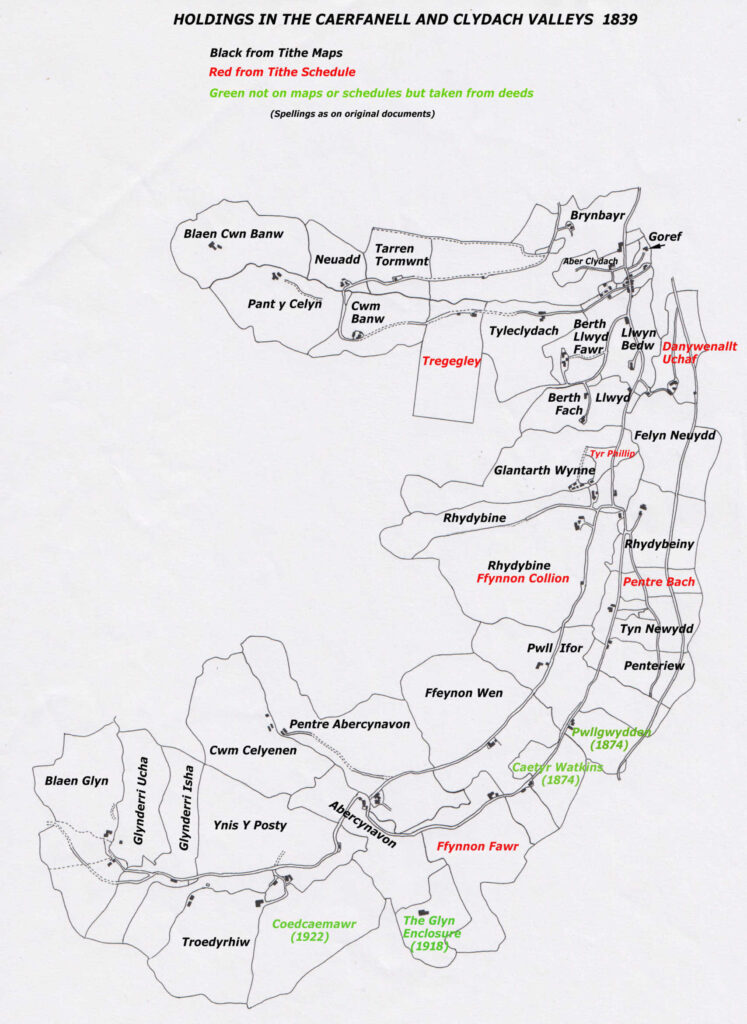
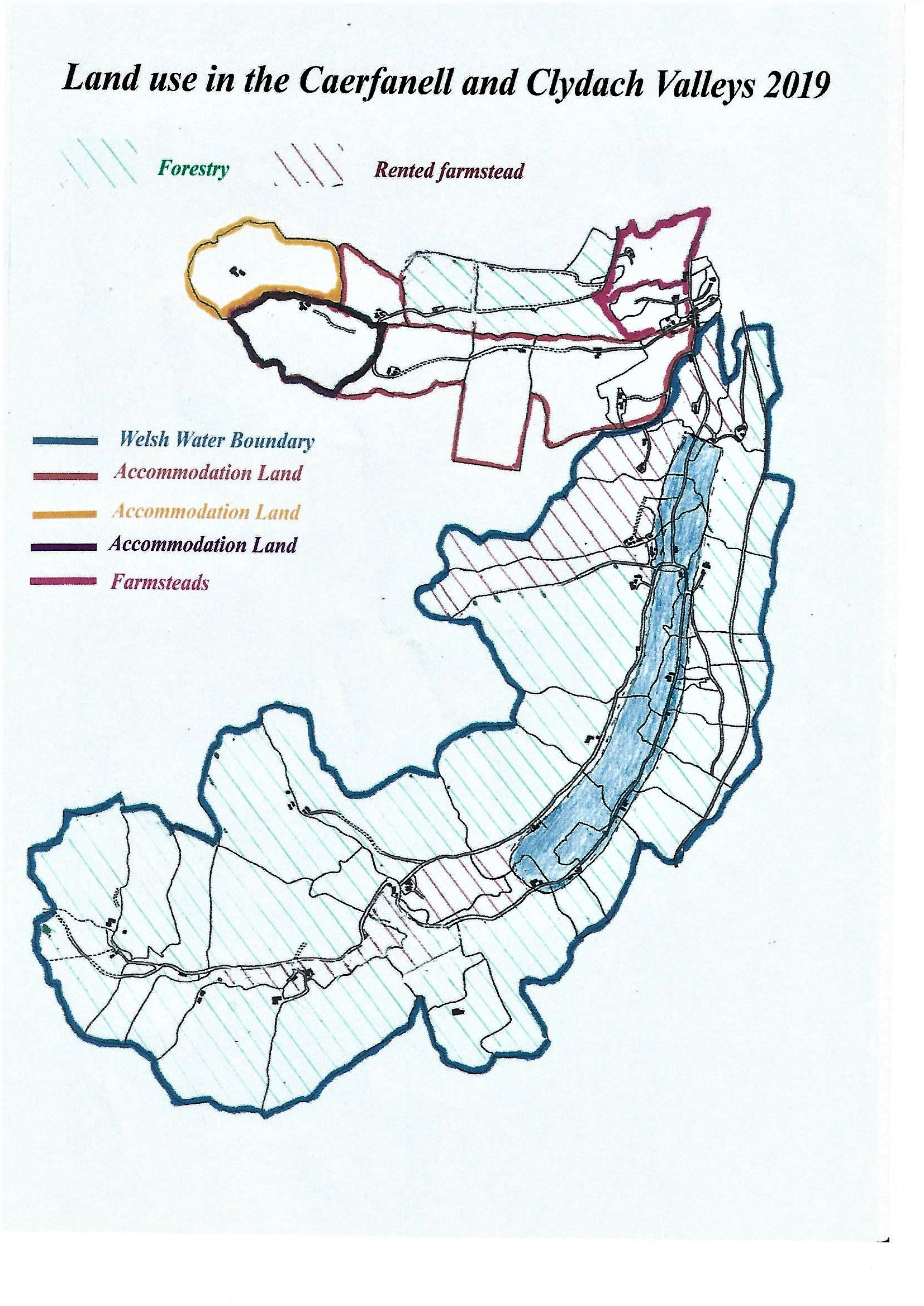
Map Land Use 2020 Total population 52
TALYBONT RESERVOIR
The first scheme initiated and funded by Newport Corporation was completed in 1927 and led to the initial depopulation of the valley. This involved a weir and catchment pond to directly divert water from the Caefanell river to a water treatment works and then by pipeline to Newport. This was hugely expensive fiasco as within two years it was apparent that during dry spells the river water sunk below the weir into the alluvial deposits beneath. Local inhabitants could have predicted this had the engineers condescended to ask them. Building a dam to create a reservoir followed the abandonment of the 1926 scheme with construction between 1932 and 1939. The site had to be moved down stream, making the earlier water works redundant, due to the lack of solid rock on which to build. The dam is an earth embankment with a clay core and has a stone pitching on the water side to prevent erosion. The works has been extended and the water treatment process up graded over the intervening years including the construction of a partially underground service reservoir.
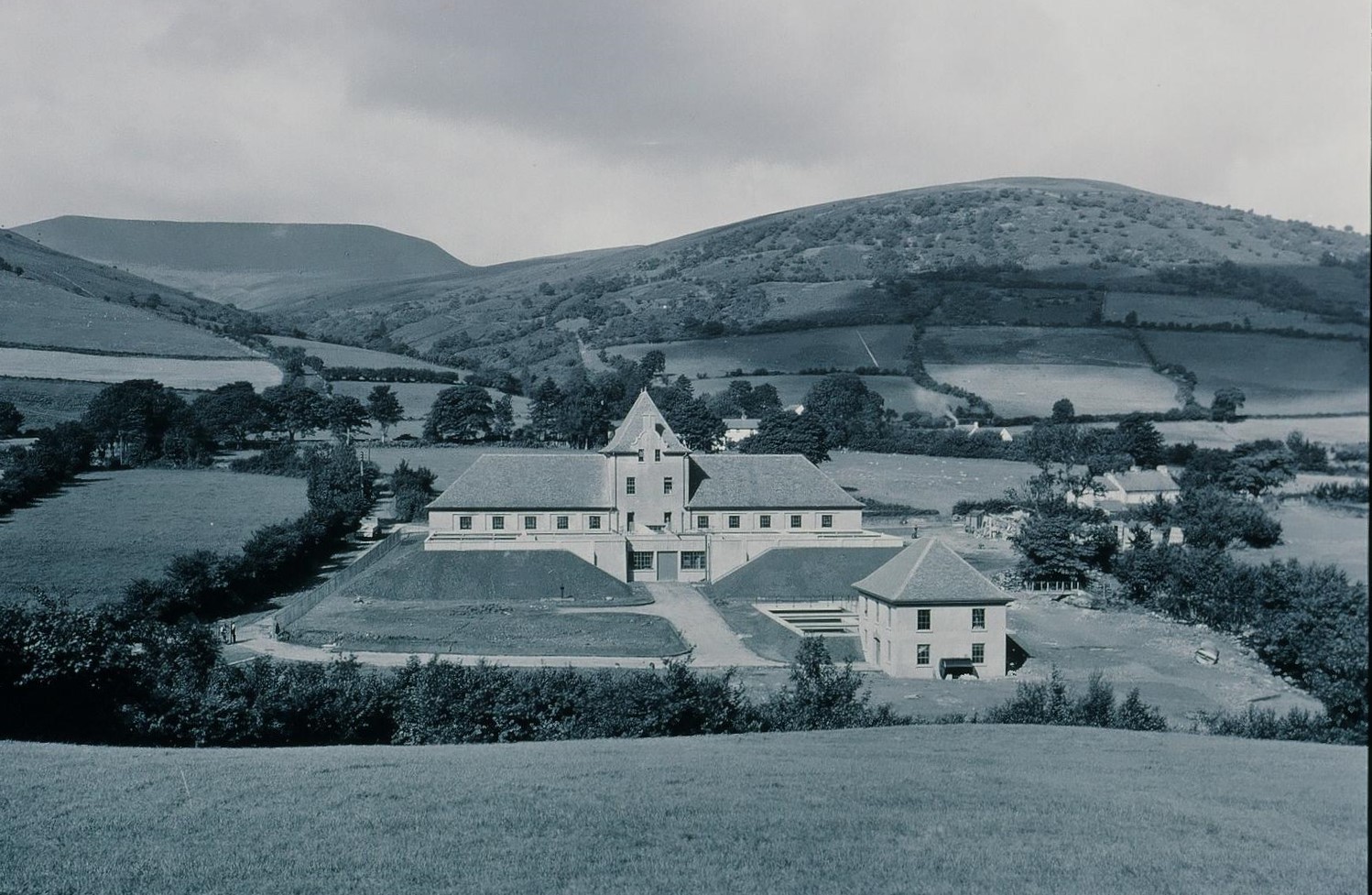
The original water treatment works 1926 scheme
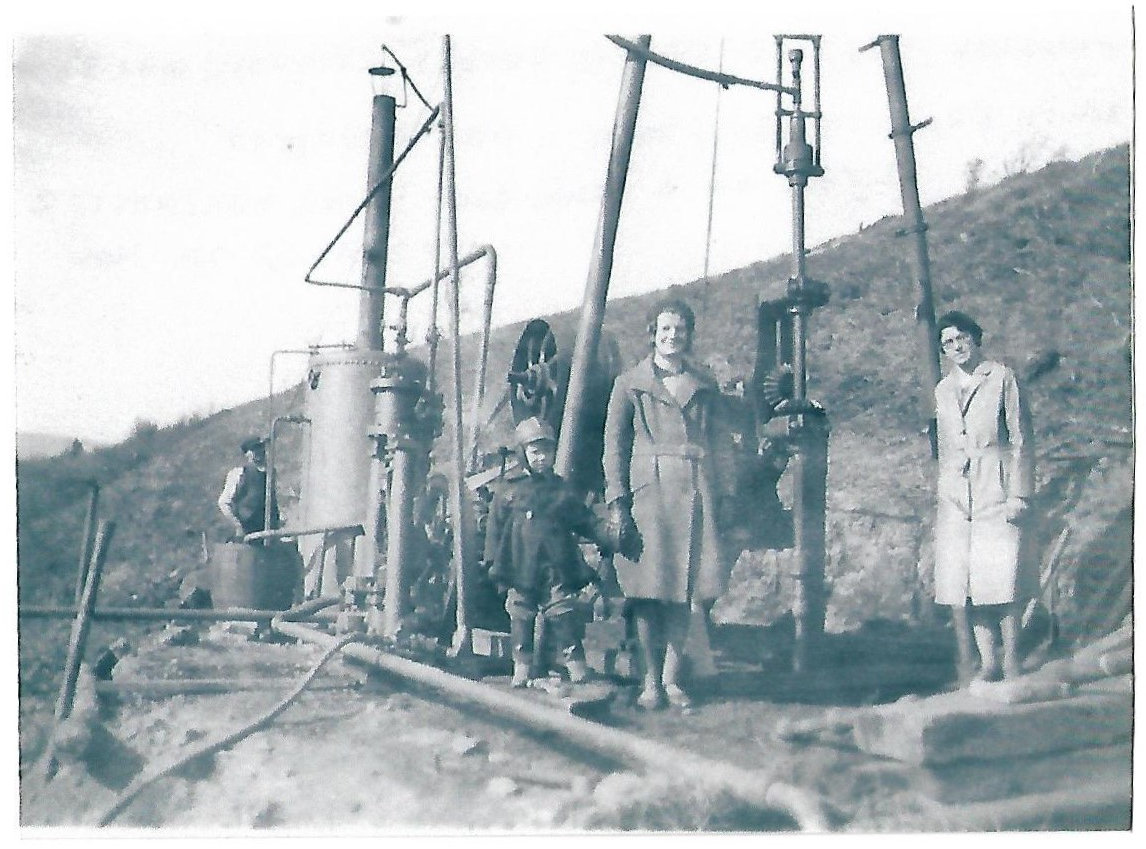
A mobile drilling rig 1931
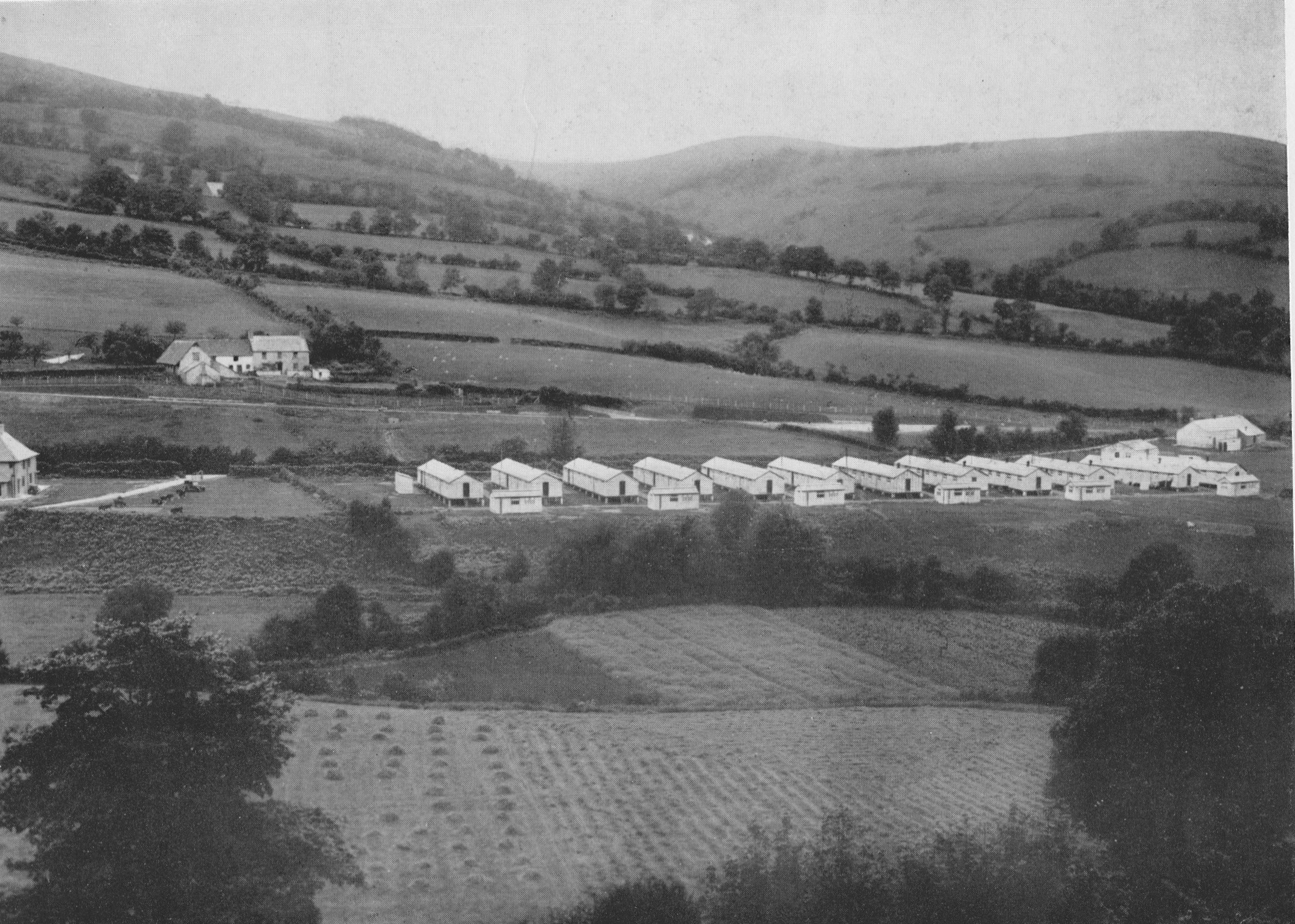
Reservoir workforce huts 1931
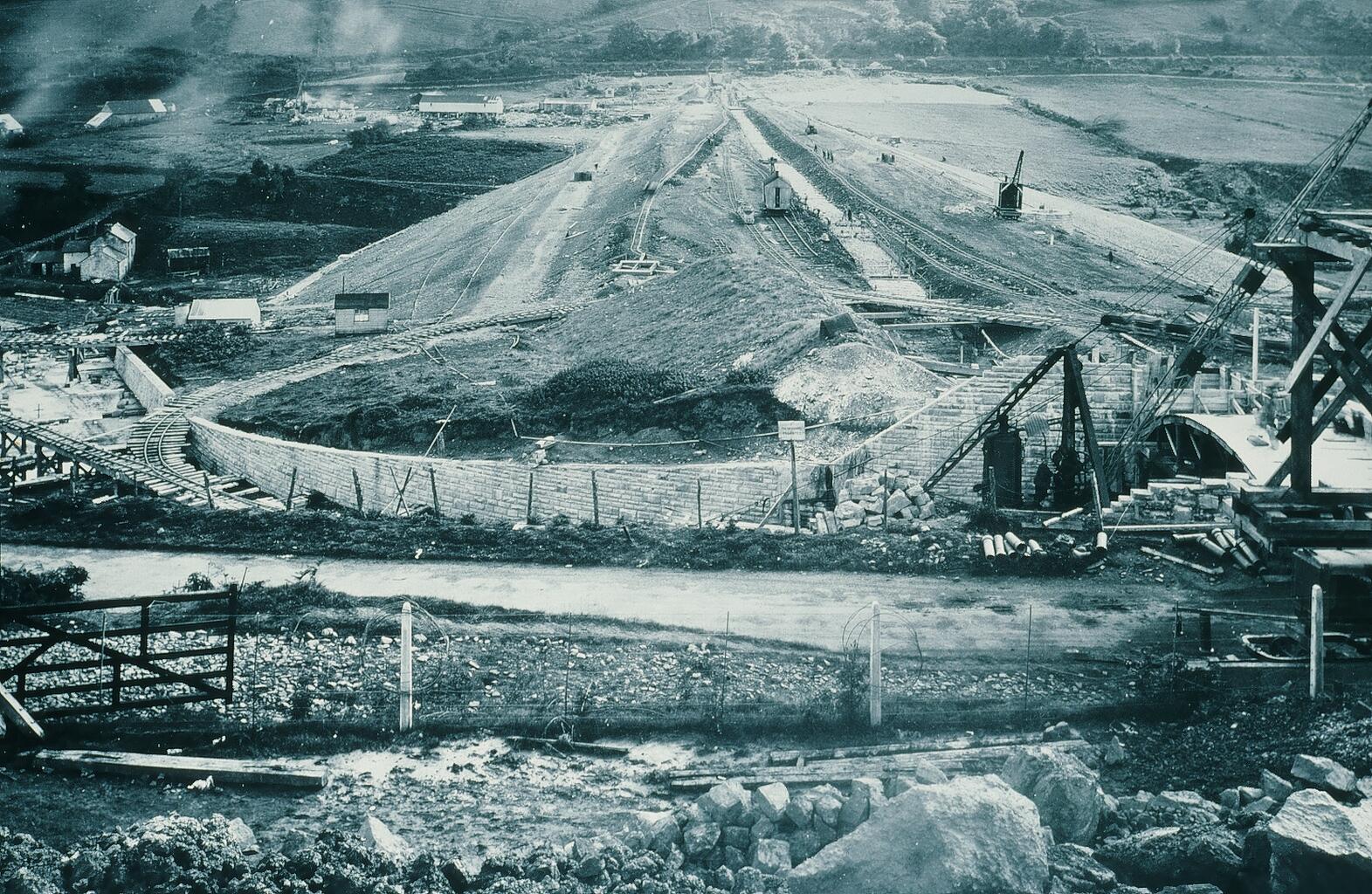
Reservoir Dam Construction
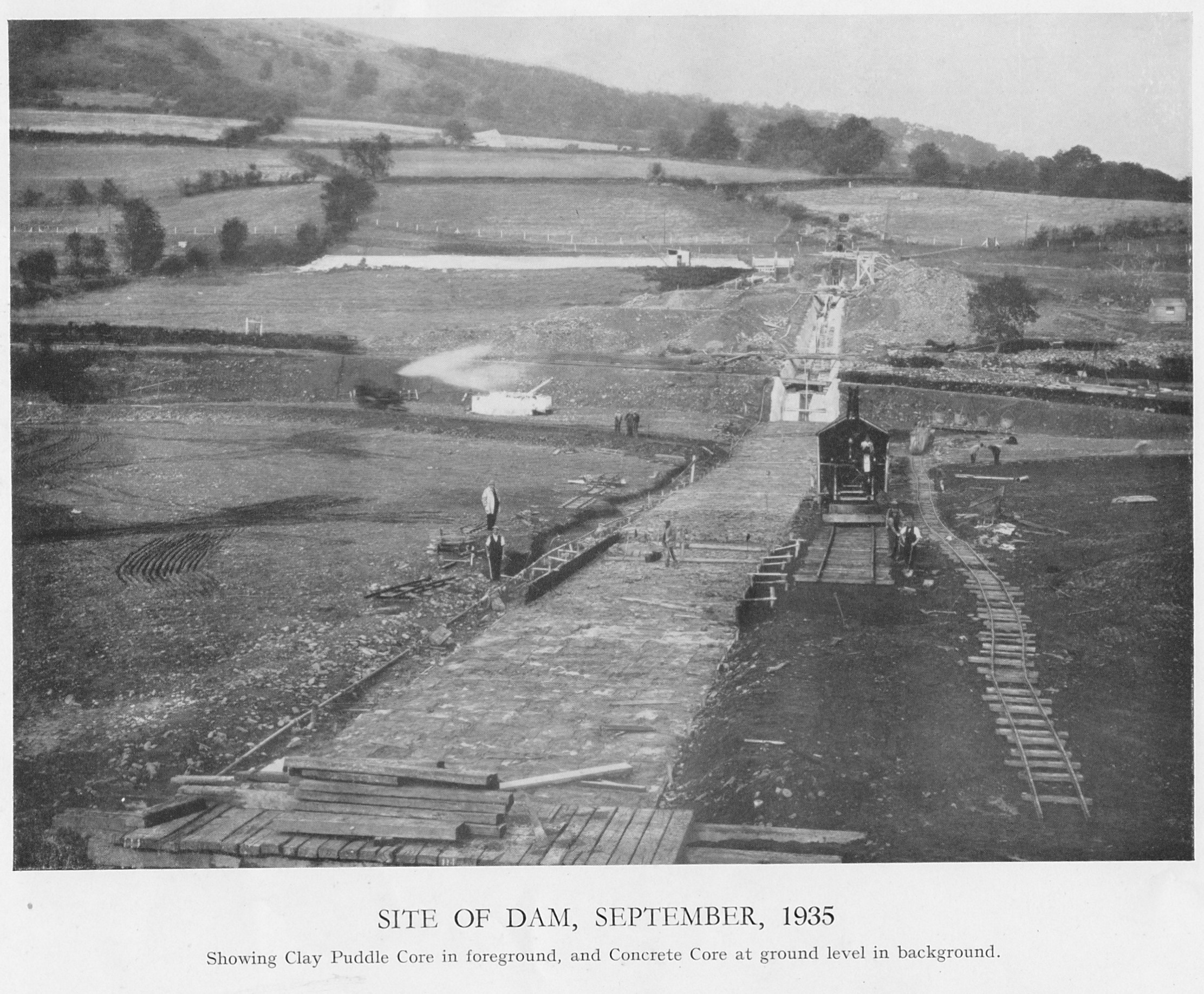
Reservior site of dam 1935
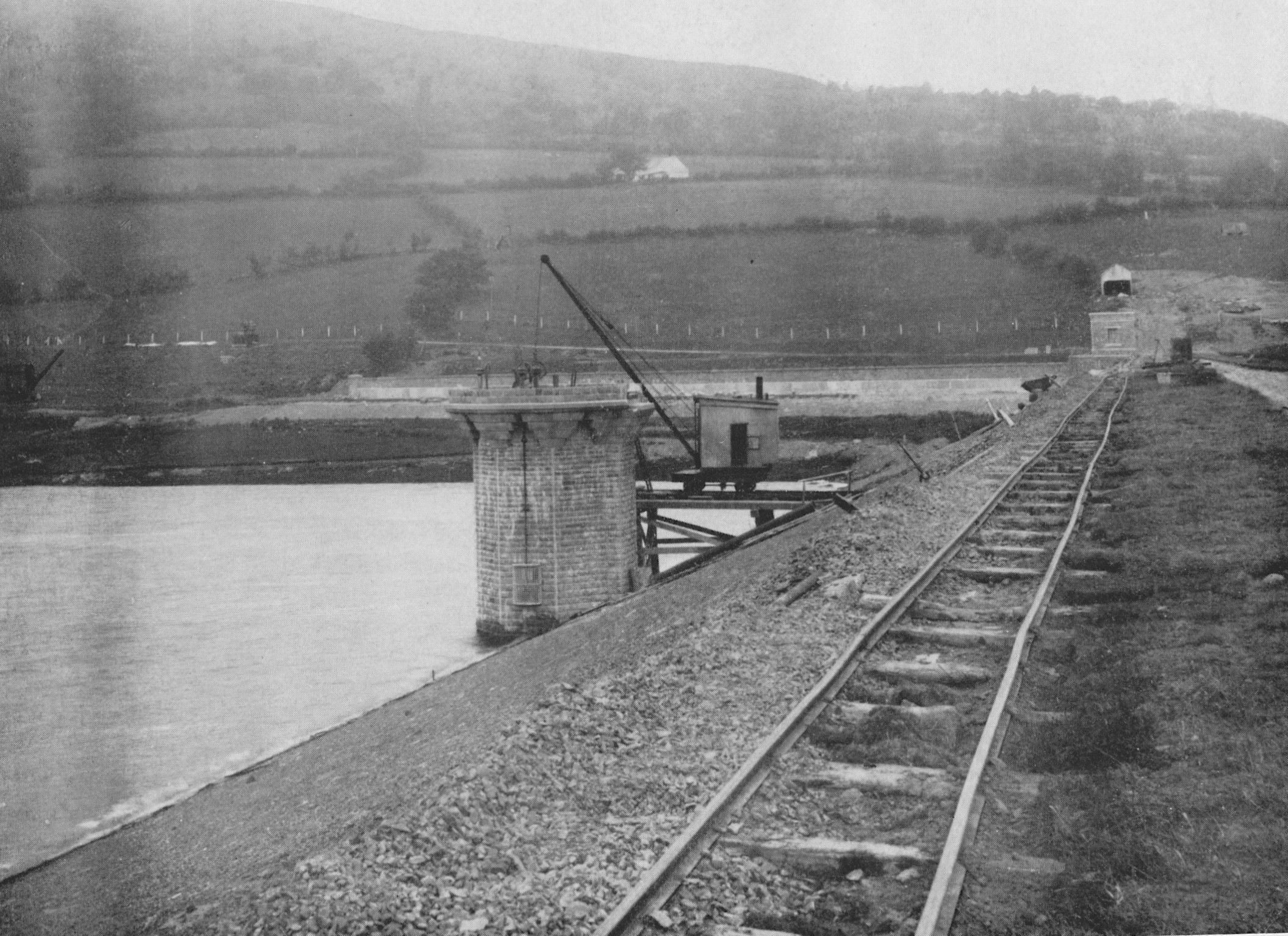
Reservoir Dam Construction
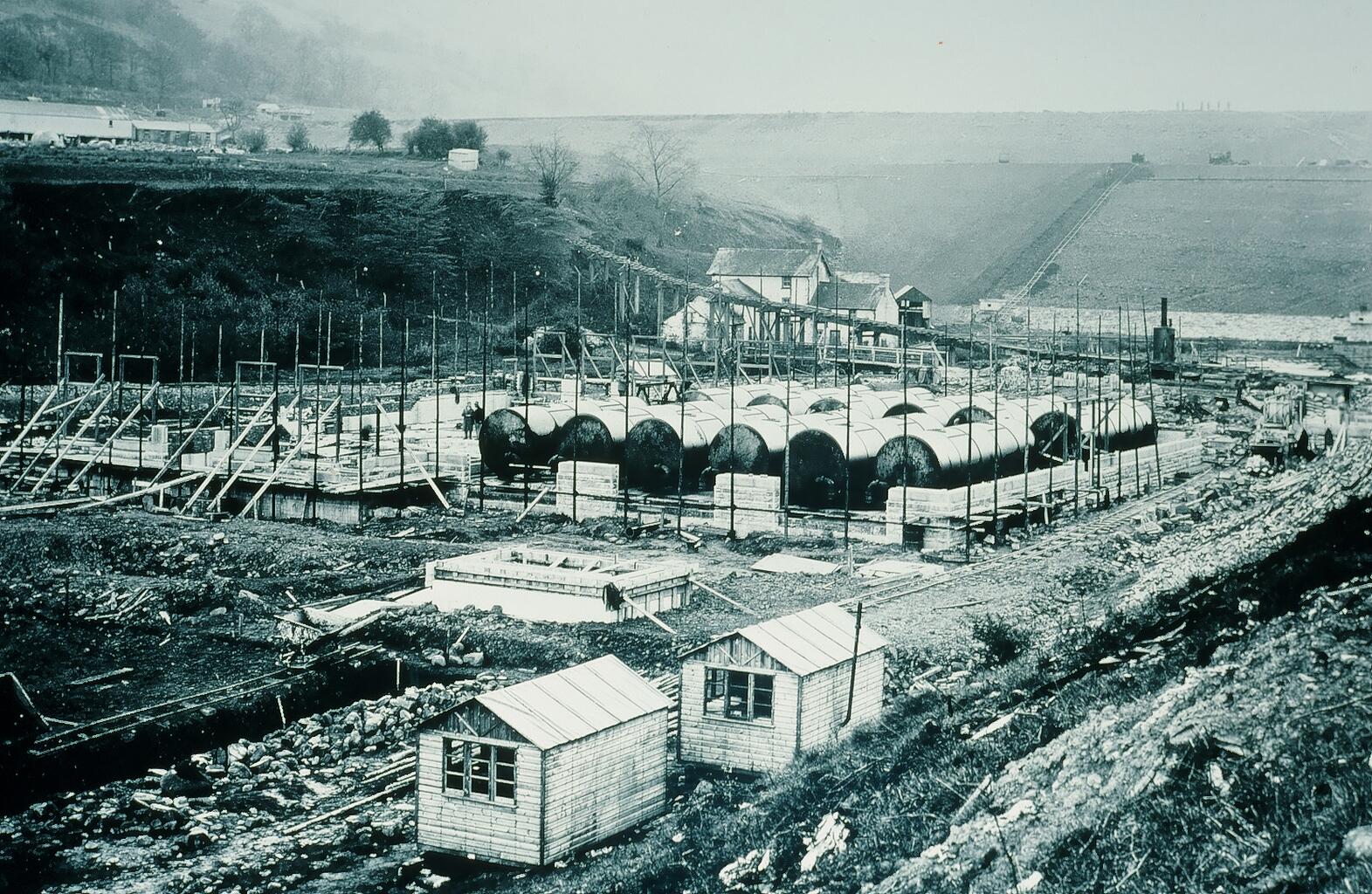
Water treatment works filter Installation
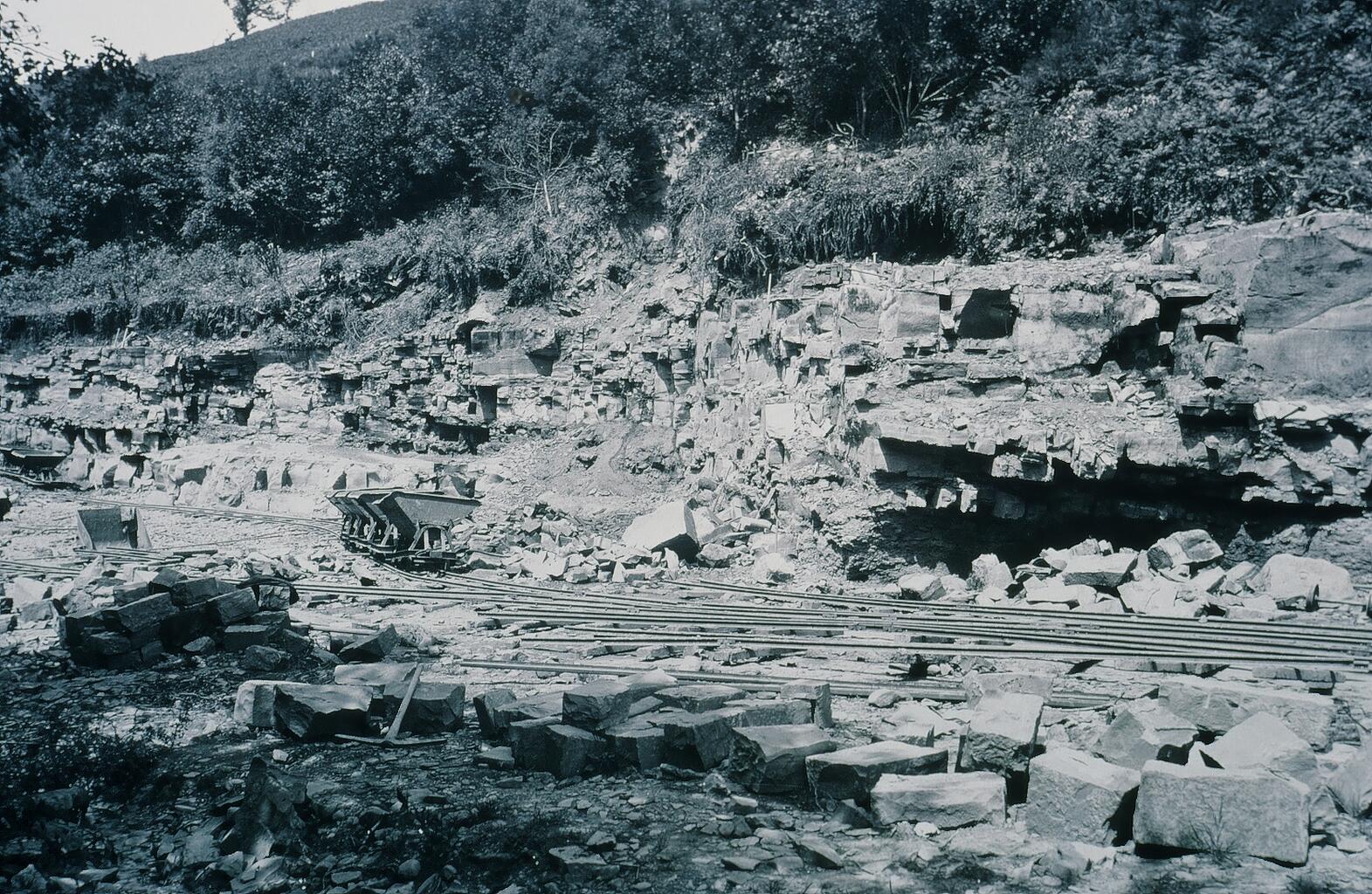
Reservoir stone quarry at Aber
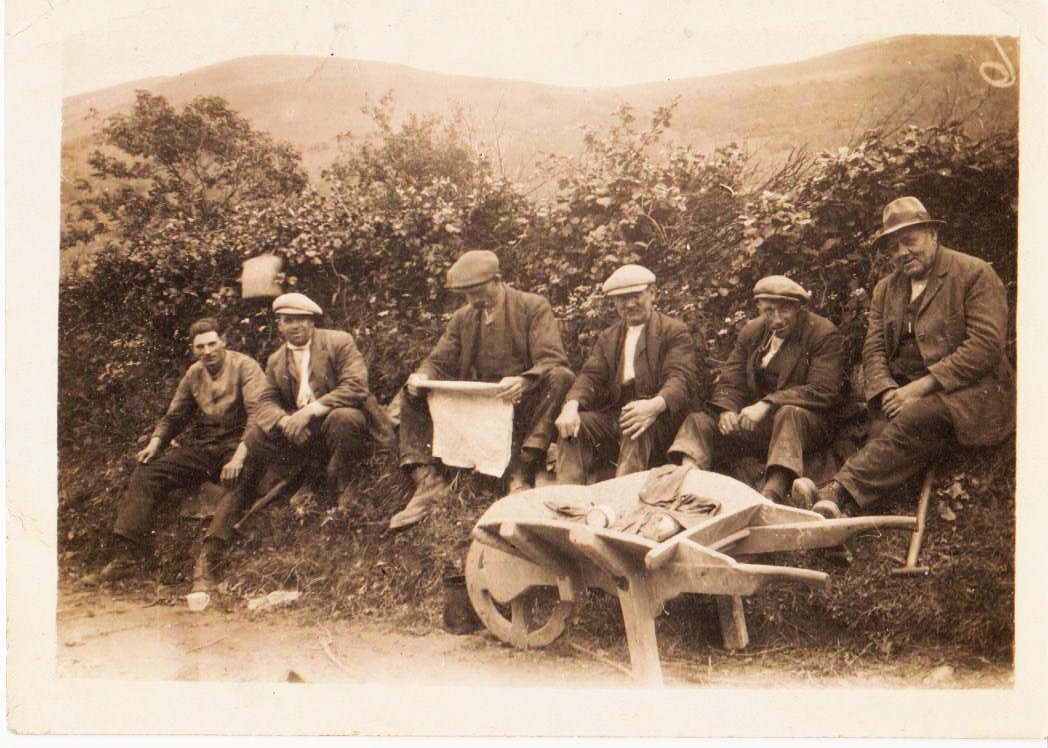
Reservoir workmen mid 1930’s
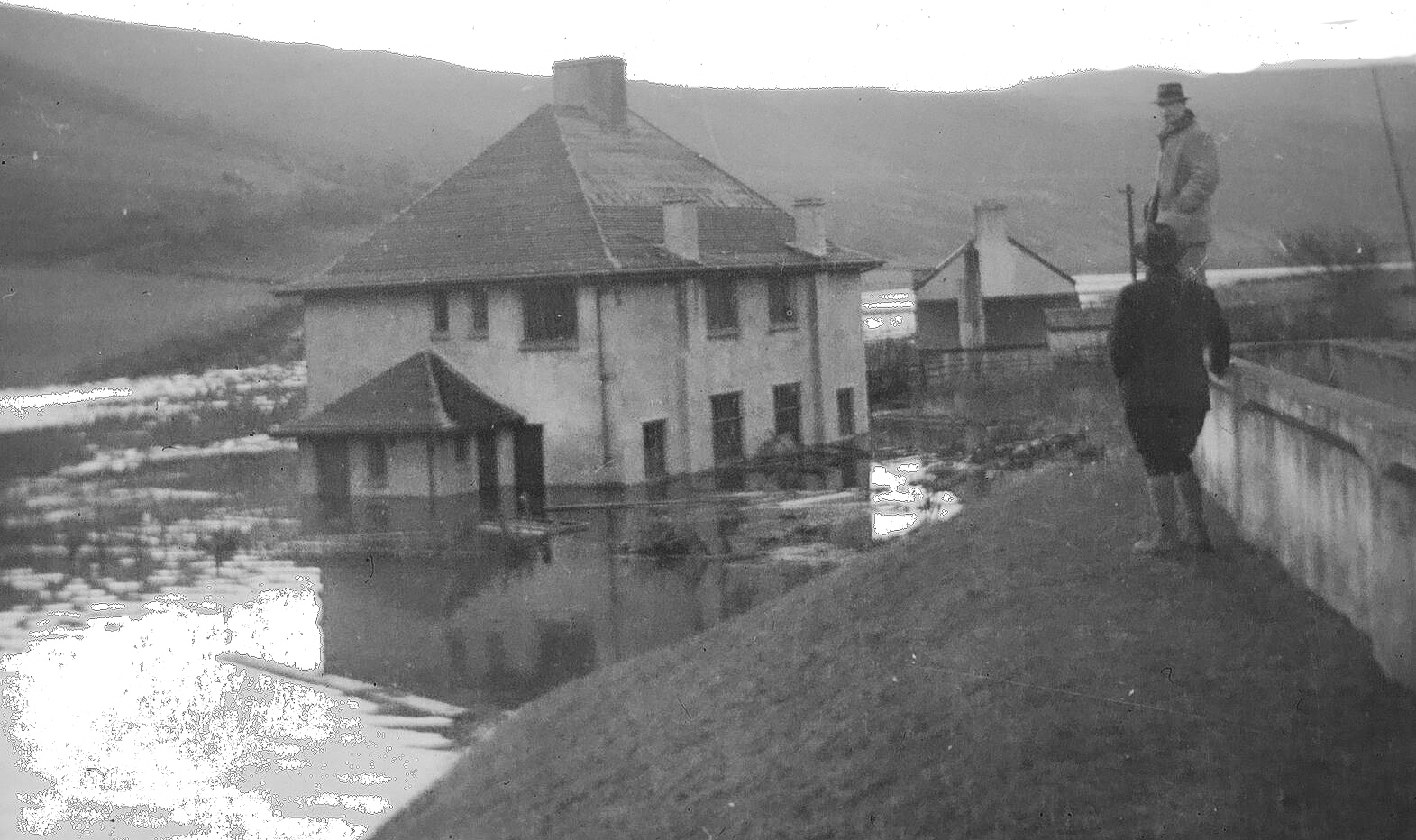
Submerging of the original Reservoir Houses 1938
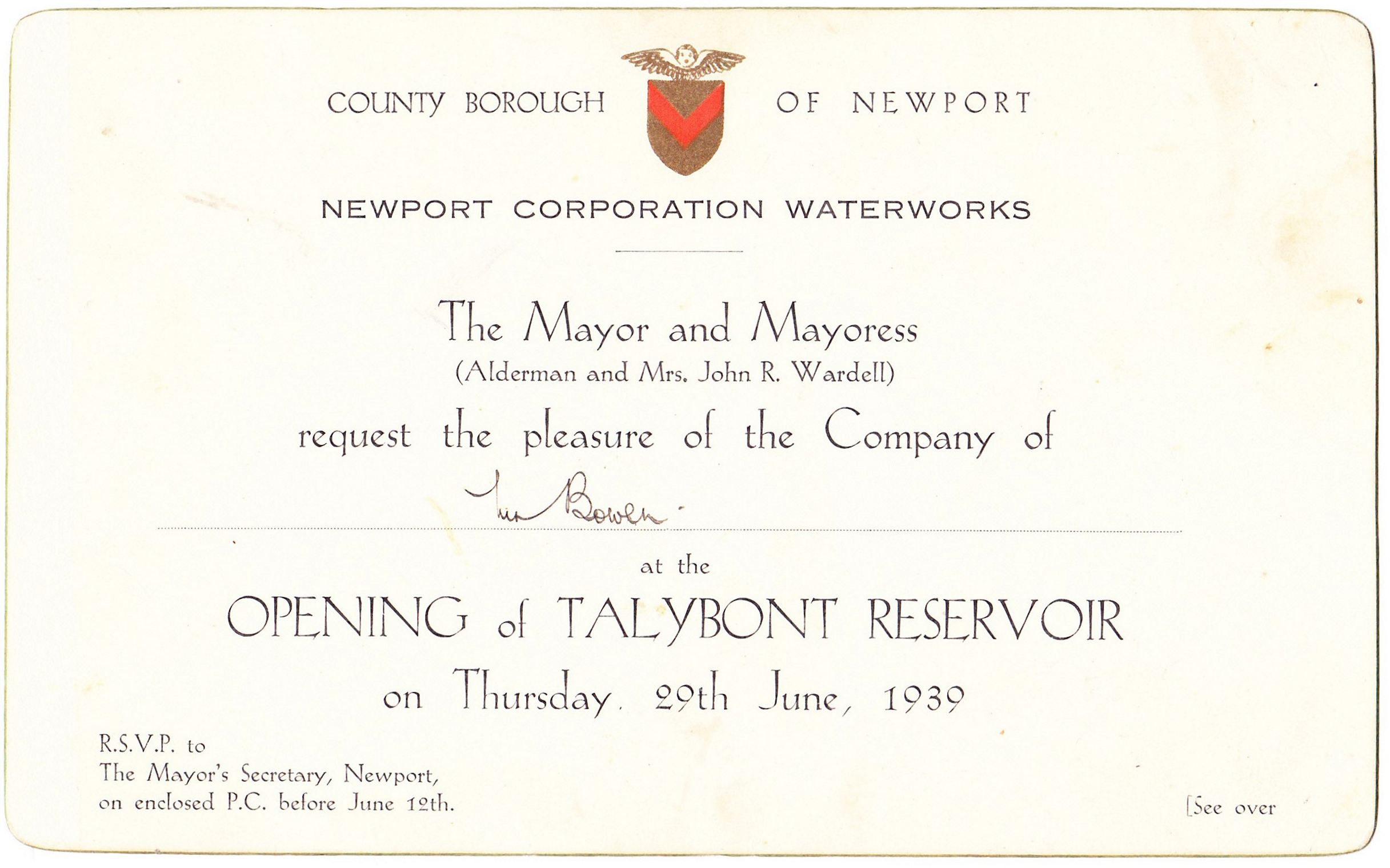
Invitation to the opening of the reservoir 1939
AGRICULTURE
Farming
The past pattern of farming away from the fertile Usk valley consisted of the homesteads being situated in the valley bottoms surrounded by enclosed fields called in-by land. Up the steeper slopes was a band of rough but still enclosed ground known as Coed Cae – wooded fields. These bordered the open moorland which was shared with neighbours. The prosperity of the holdings depended on the acreage, soil fertility and gradient. Most strived to be self sufficient in addition to making a profit from grain, sheep, cattle with dairy products, poultry and vegetables – mainly potatoes. Large families and fickle markets meant a hard life for many.
Today some cereals and arable crops are produced on the flood plain of the Usk directly to the north of Talybont with pasture covering the majority of the enclosed land elsewhere. Beef production from single suckled herds (one calf with its mother) prevails with the stock over wintering in large sheds. Sheep dominate utilising the fields with many sent up onto the open mountains in summer. These flocks are territorial (known as Hefted) and instinctively stay in their own area of moorland. Most lambs are born in sheds between February and March but some farmers prefer to let the ewes give birth in the fields later in April. Today large farms are the norm with reliance on contractors in place of full time hired help.
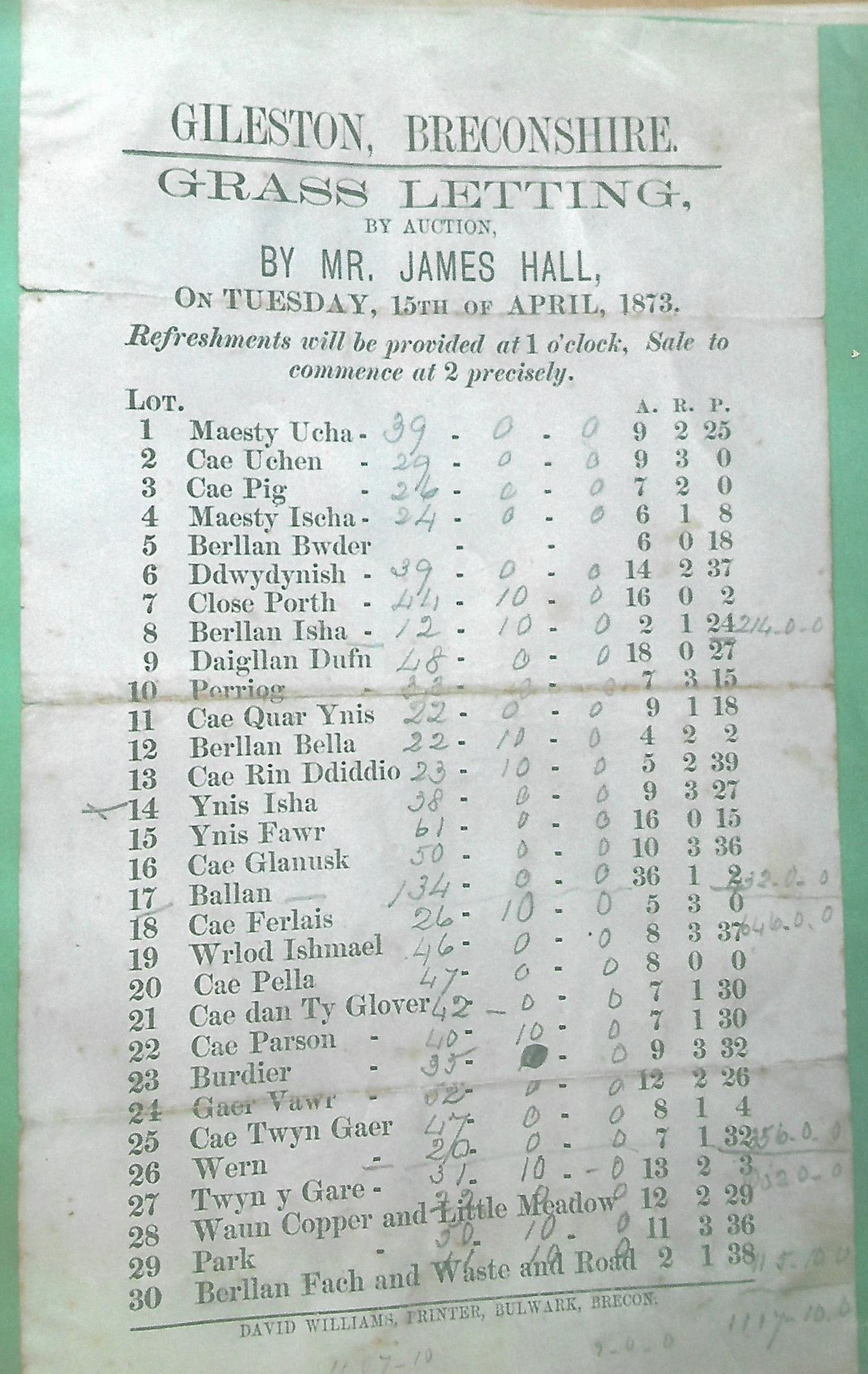
Gilestone Farm Talybont grass letting 1873. It was a common practice for farmers’ fields to have names.
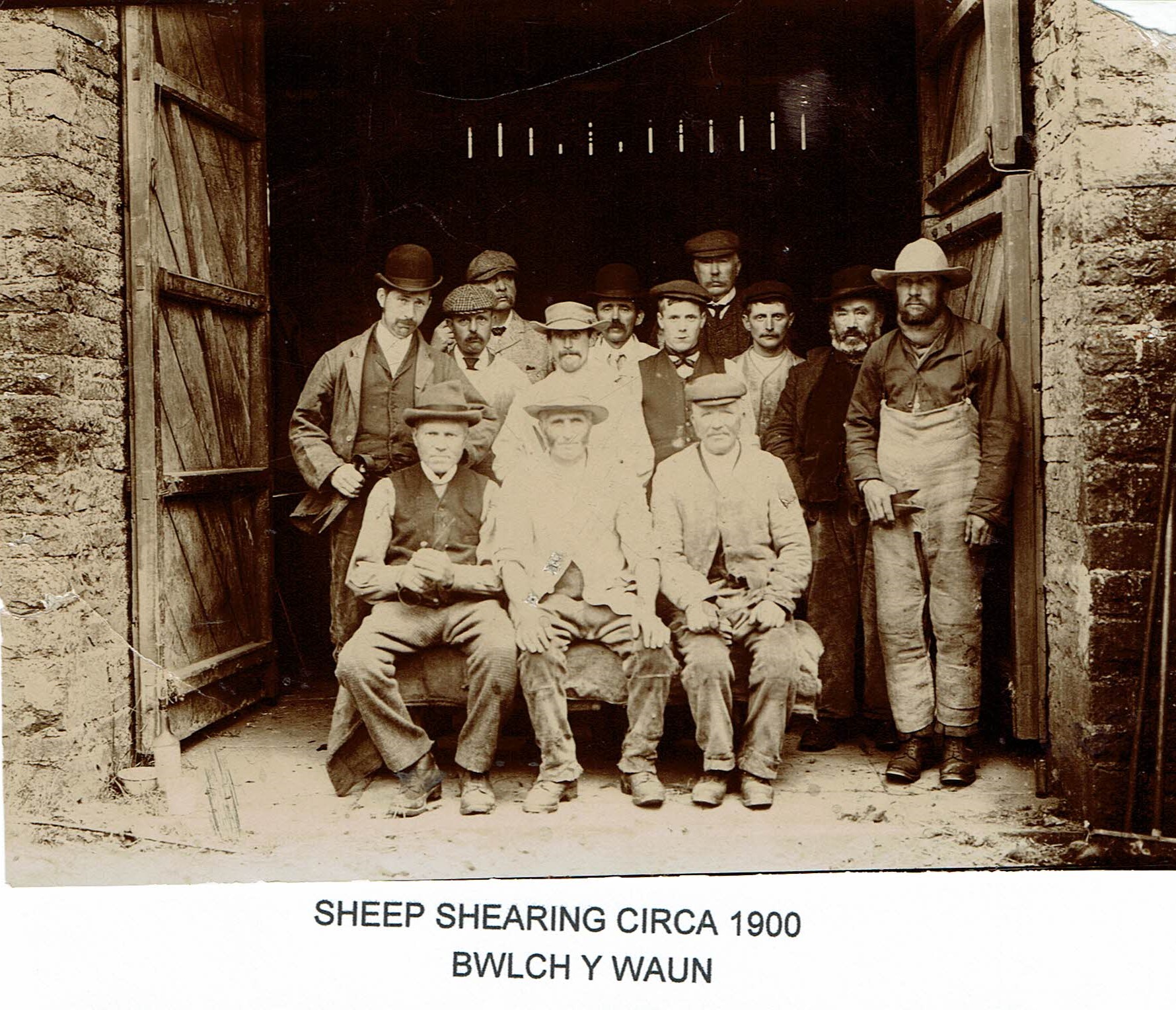
Shearting at Bwlchwaun C1900

David Morris of Llwynbedw 1846 – 1931
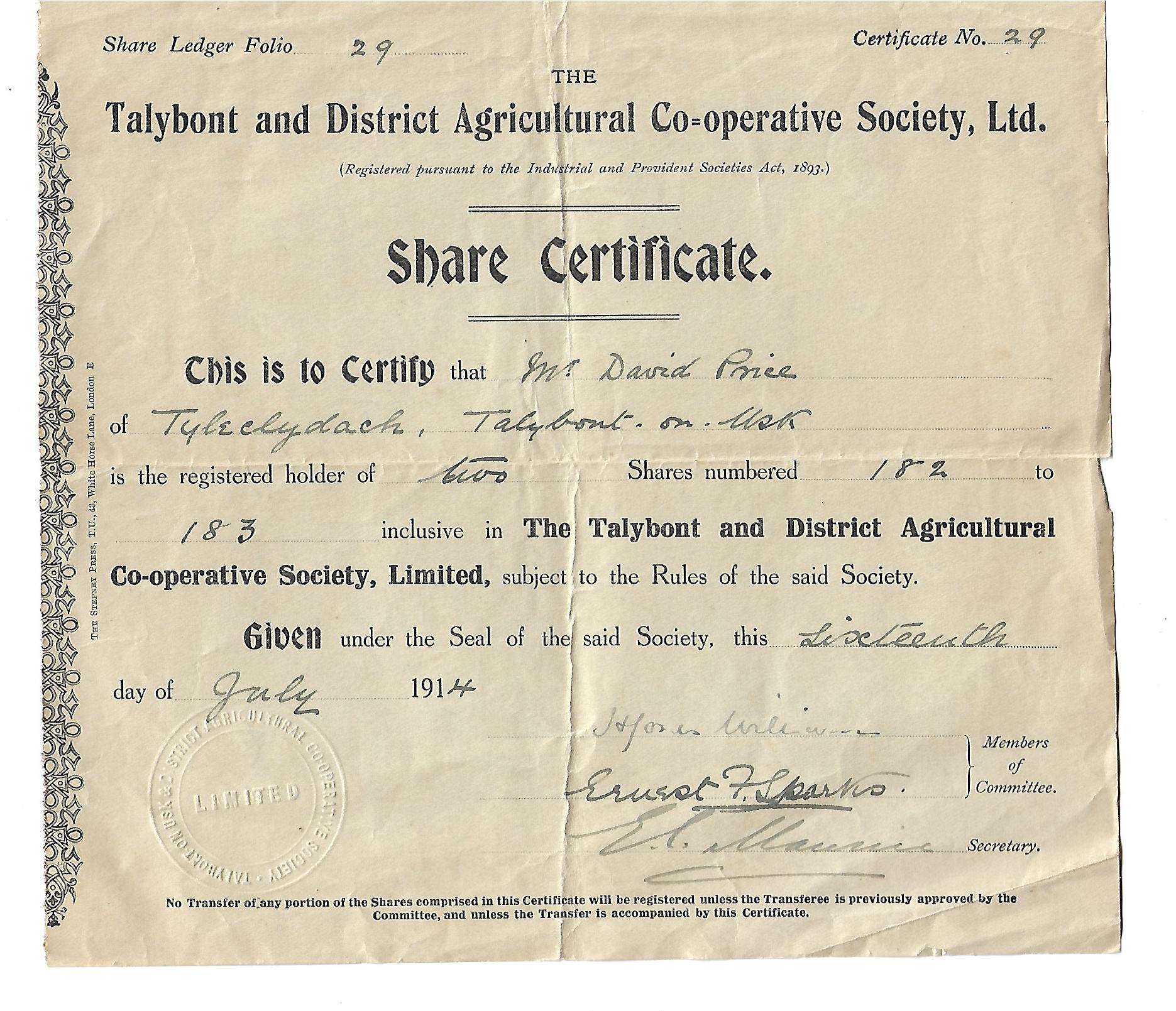
Talybont Mart share certificate 1914
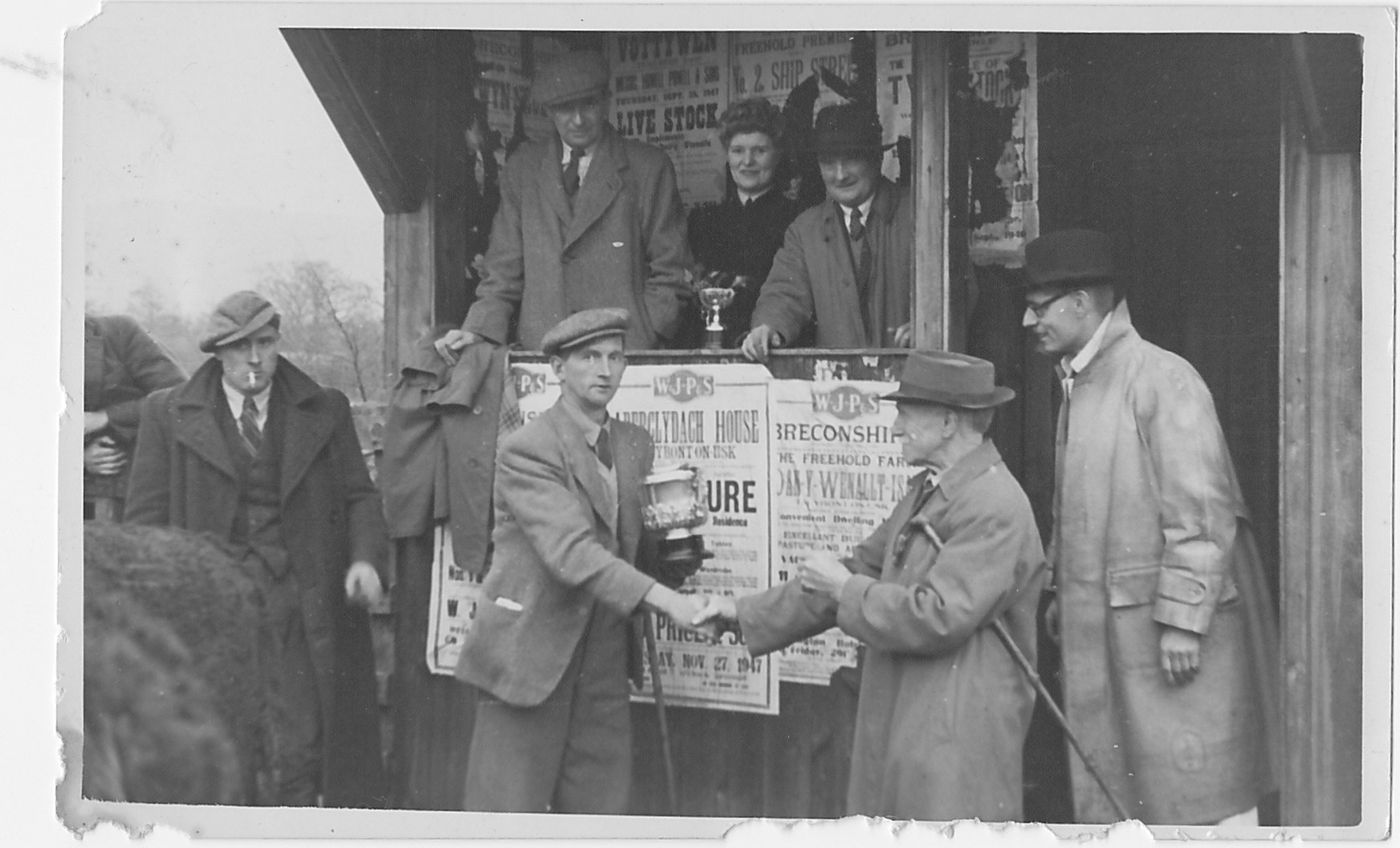
Talybont Mart Prize 1947
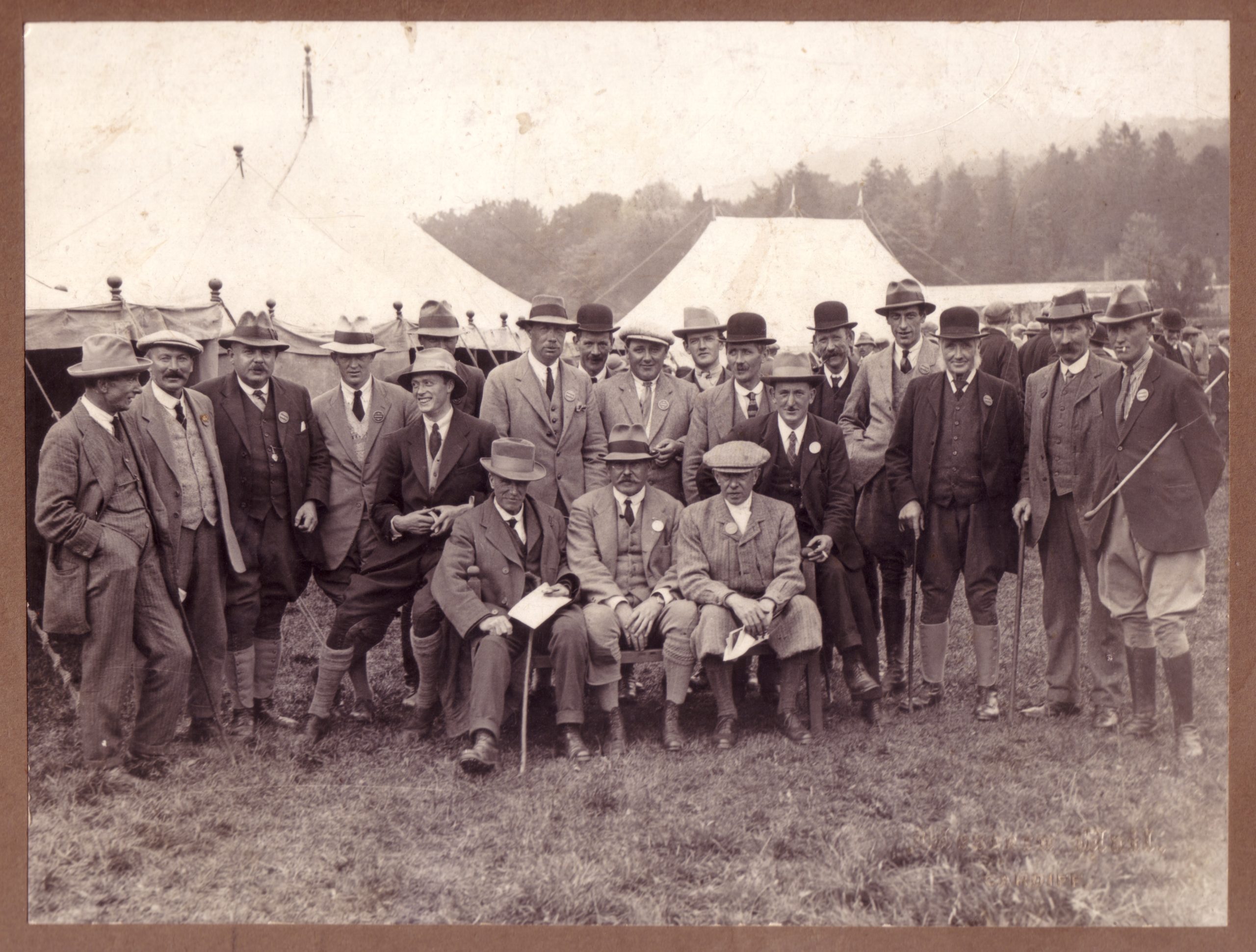
Talybont Farmers 1927
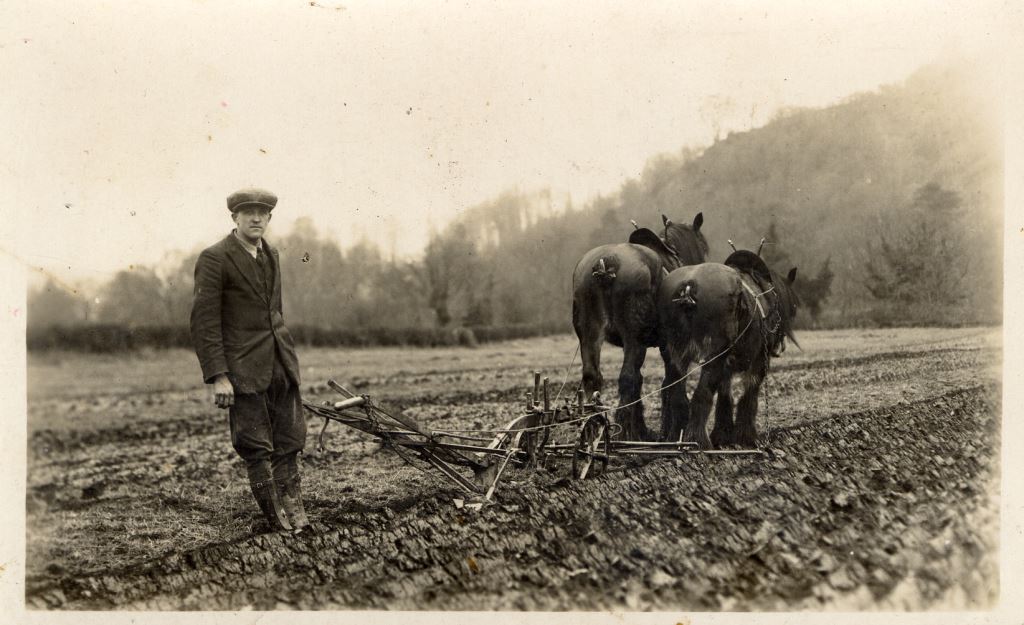
Doug Mason champion ploughman Aber 1937
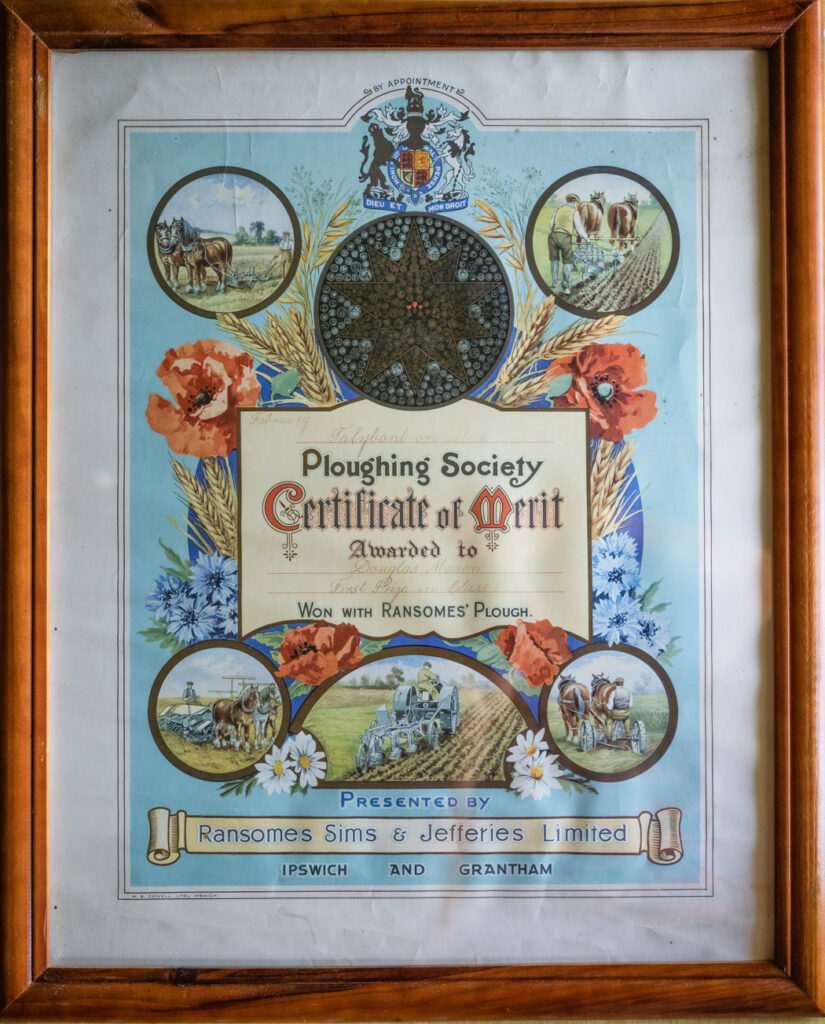
One of many ploughing championship awards won by Doug Mason
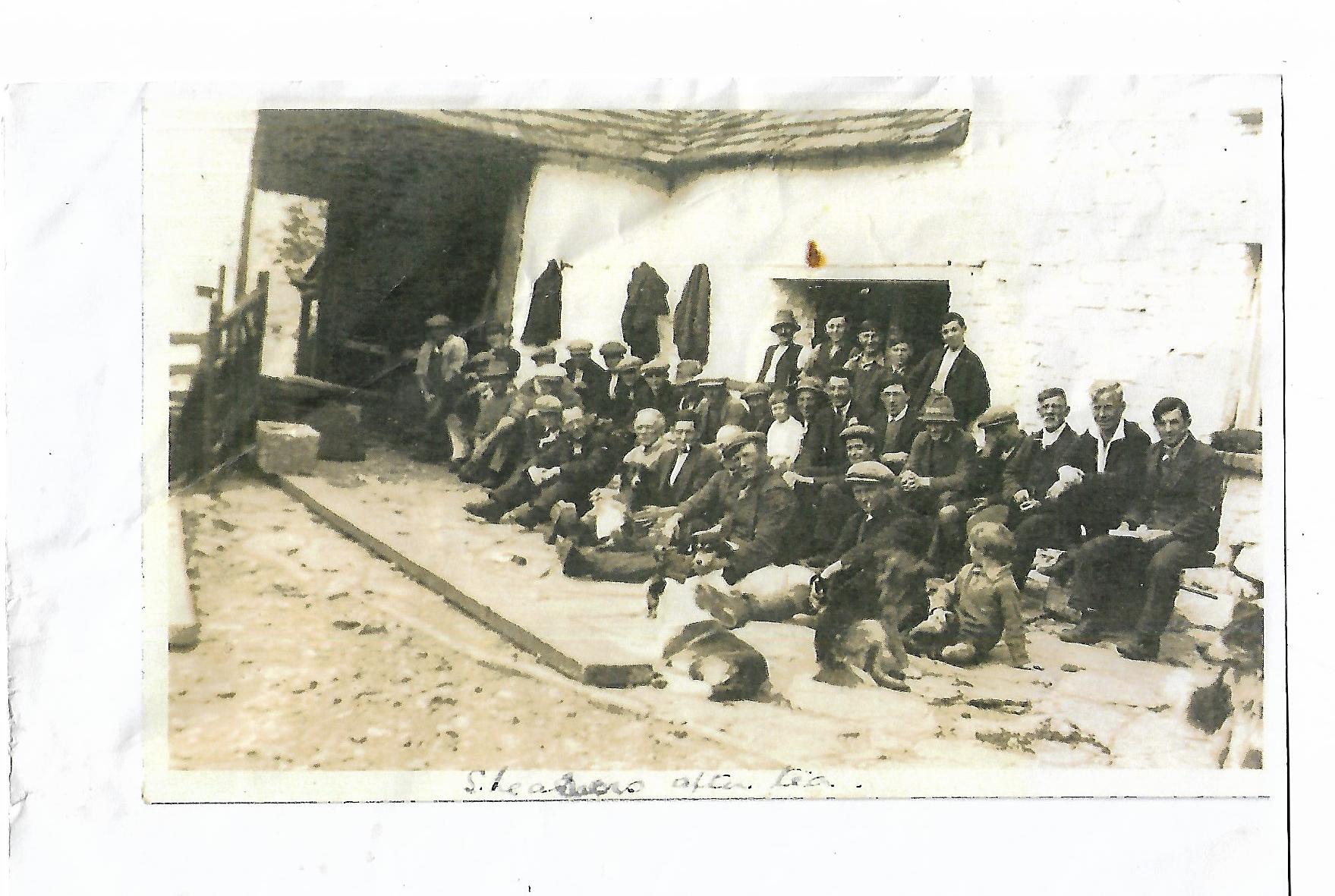
Shearing Torpantau 1950
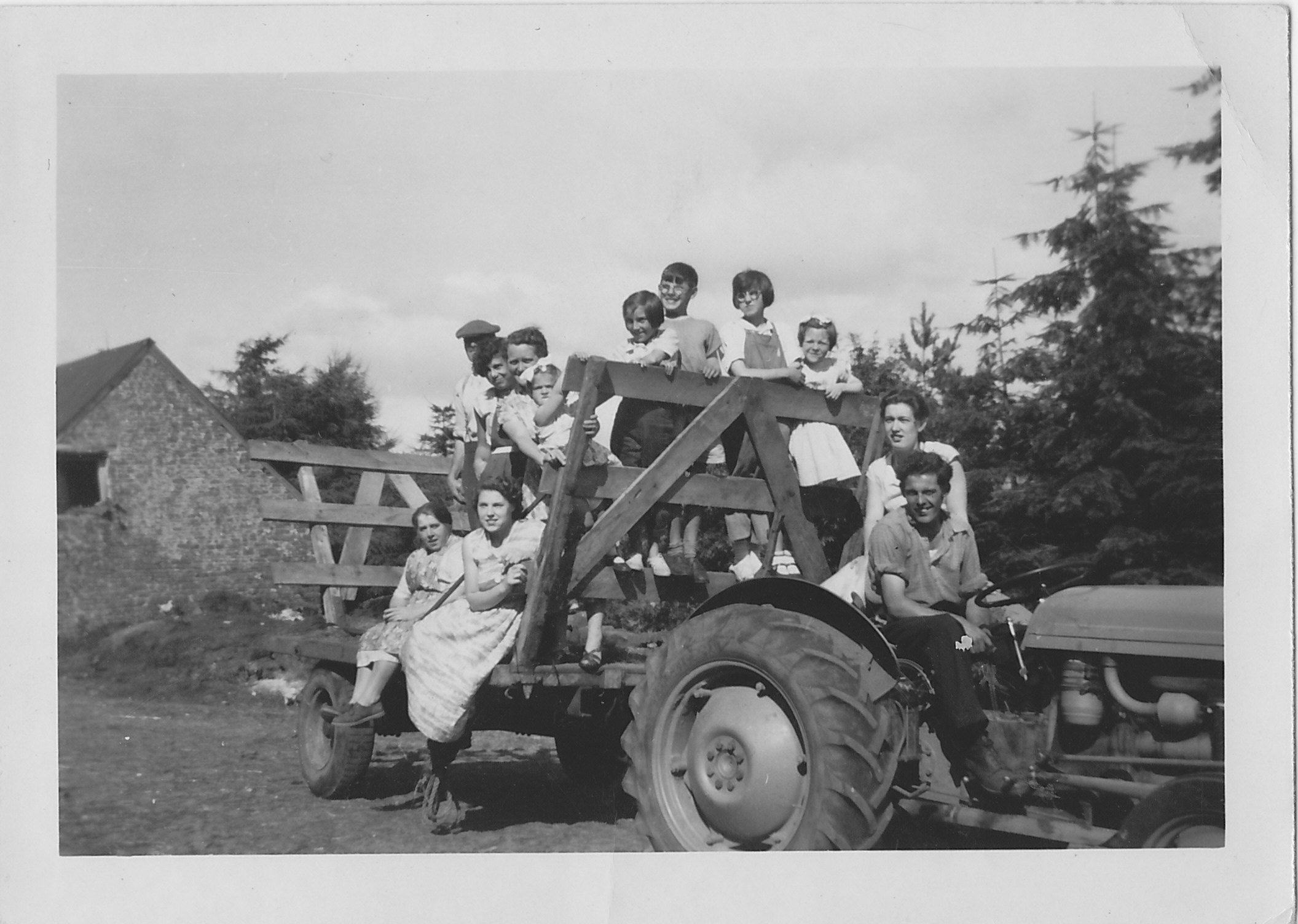
Powell family harvest Wenallt 1955
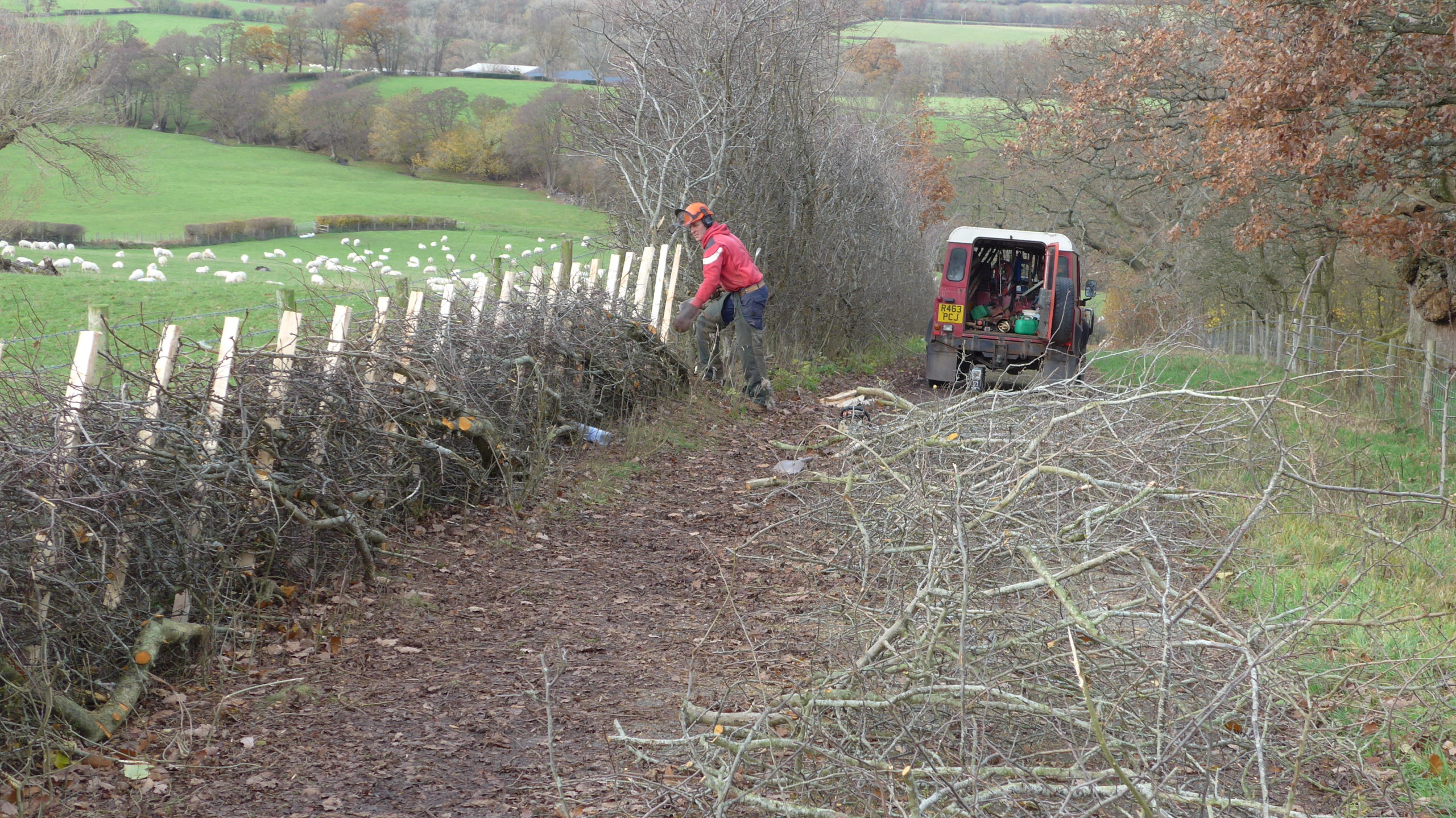
Hedge Laying 2018
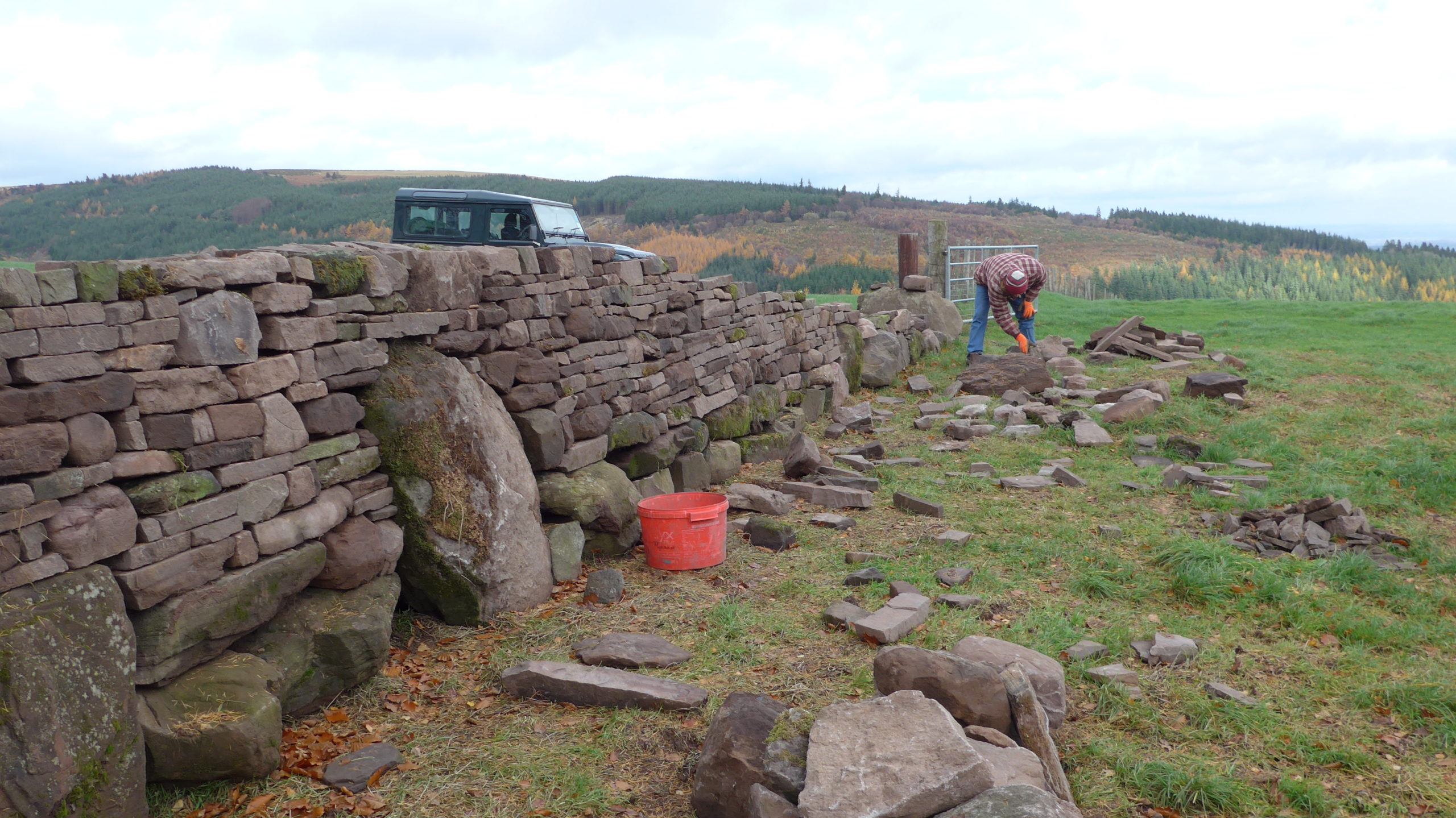
Dry Stone walling 2018
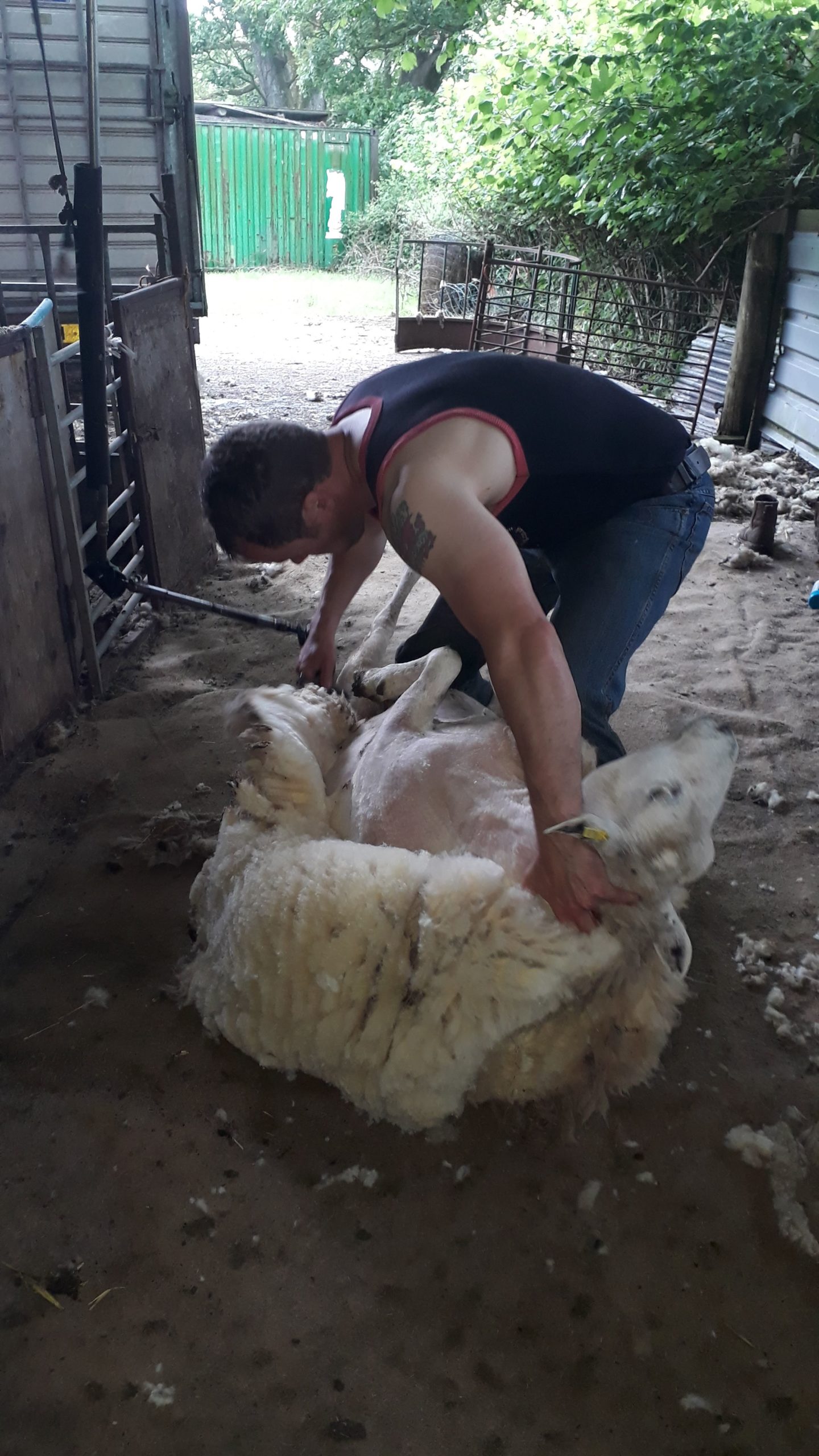
Huw Morgan shearing 2019
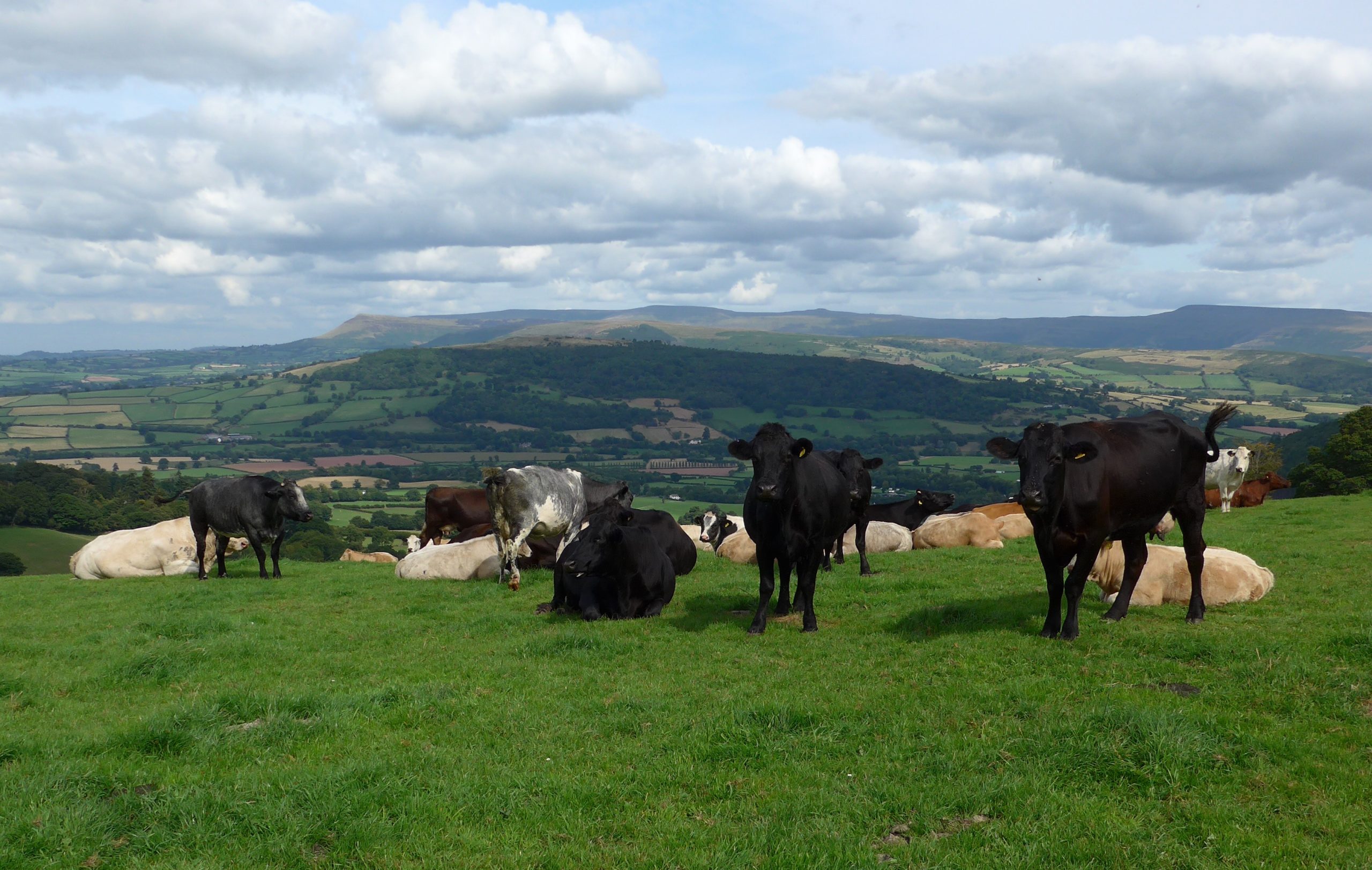
Cattle grazing above Aber 2019
The Criban Welsh Mountain Pony Stud.
This world famous stud was founded by Howell Richards of Abercriban in 1910 and was taken over by his son Llewellyn in 1939. Welsh mountain ponies had been very popular for work in the coal mines of South Wales, but with a decline in demand and mechanisation they were no longer needed. Llewellyn set out to breed an ideal riding pony with great success winning many prestigious awards eventually exporting ponies across the world as far afield as Australia. In 1959 these ponies appeared in the film Tiger Bay with John and Haley Mills. Criban Mog was famously presented to the king of Nepal by Queen Elizabeth in 1961. Further recognition came in 1978 when Criban Victor featured on a postage stamp. Llewellyn died in 1982 but the stud continues to prosper in 2020 run by his grand daughter Sarah.
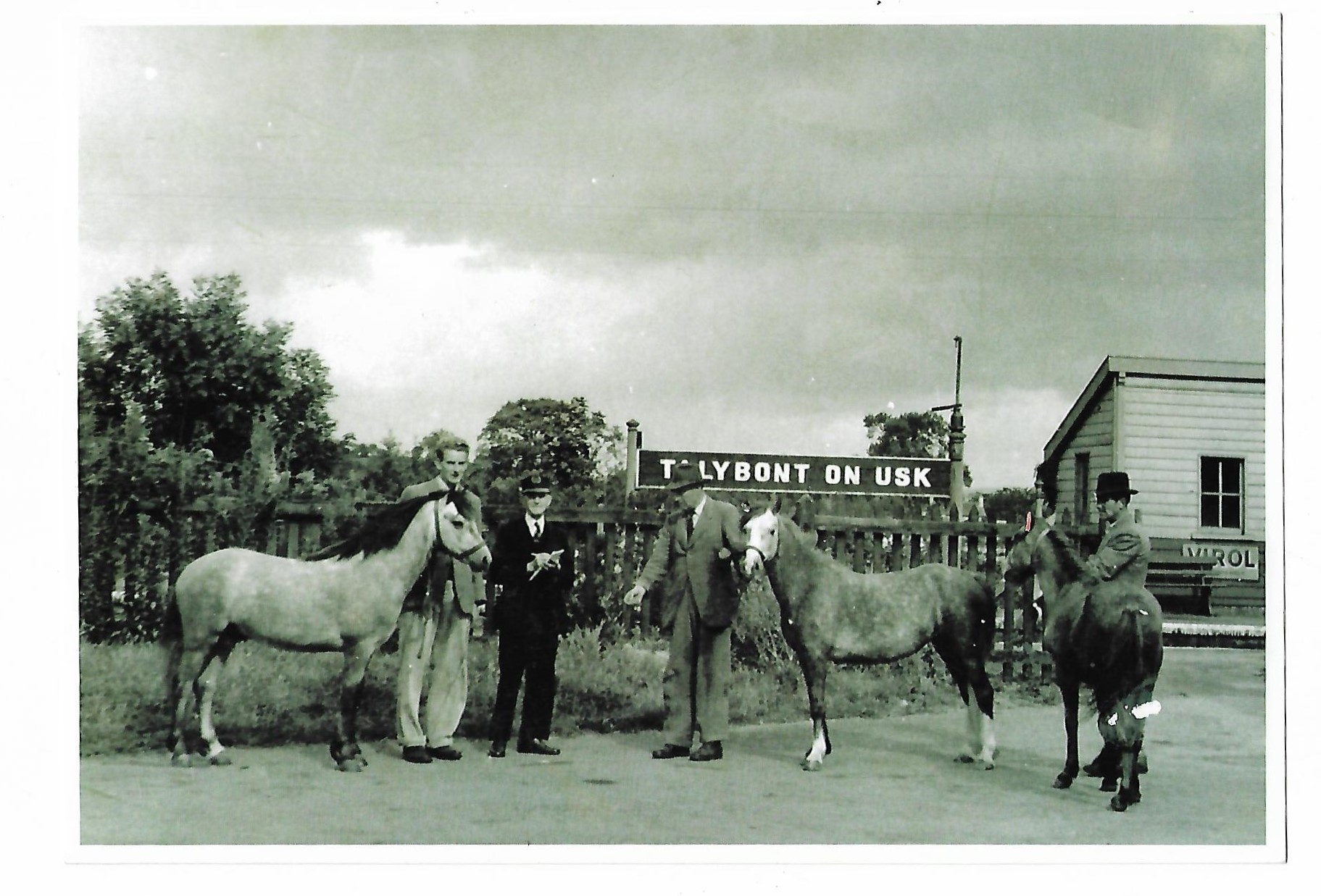
Ponies being transported to the USA via Liverpool 1953
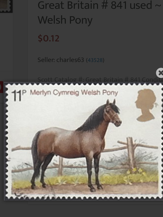
Criban Pony stamp
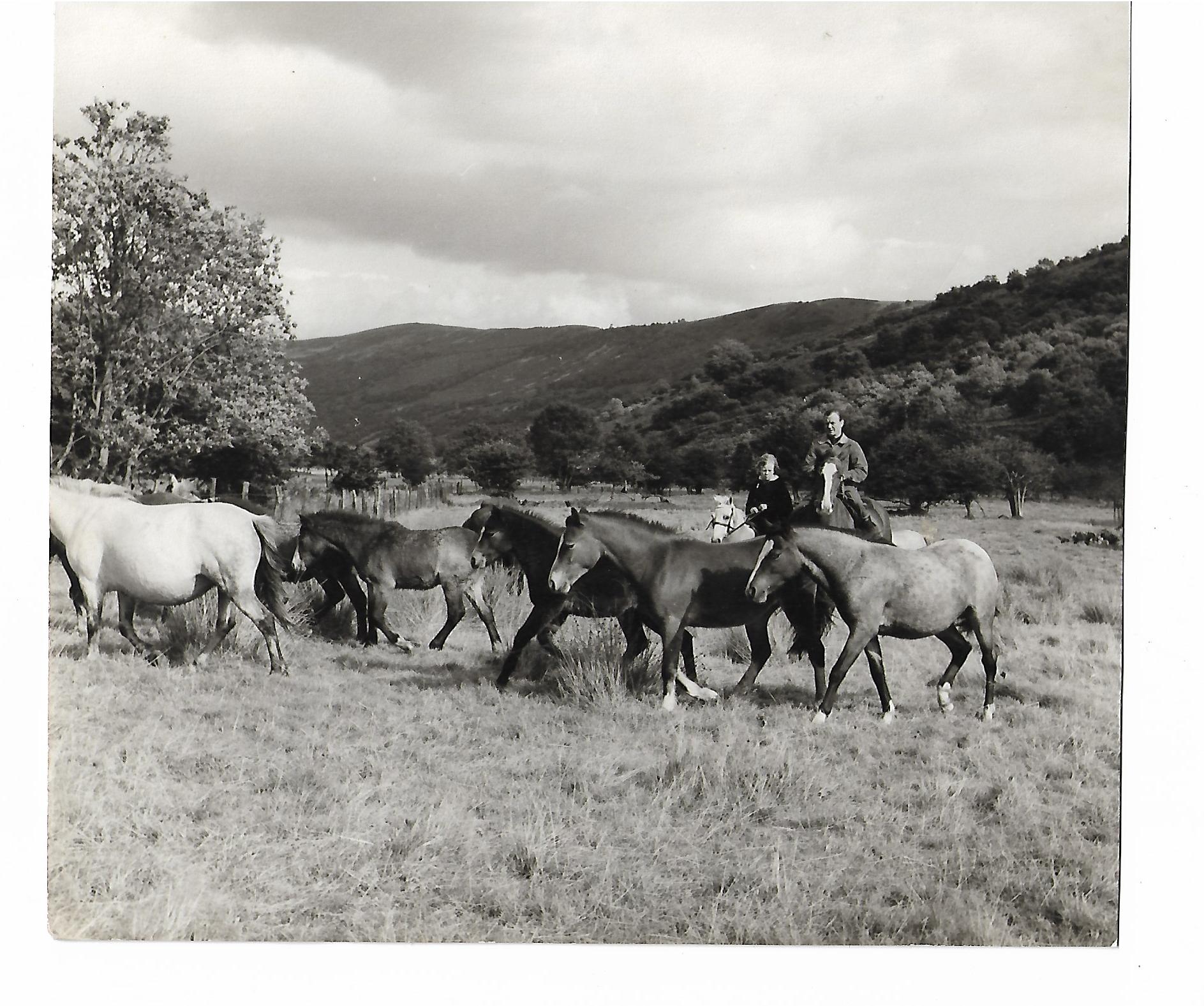
Criban ponies feature in the film Tiger Bay with John and Haley Mills 1959
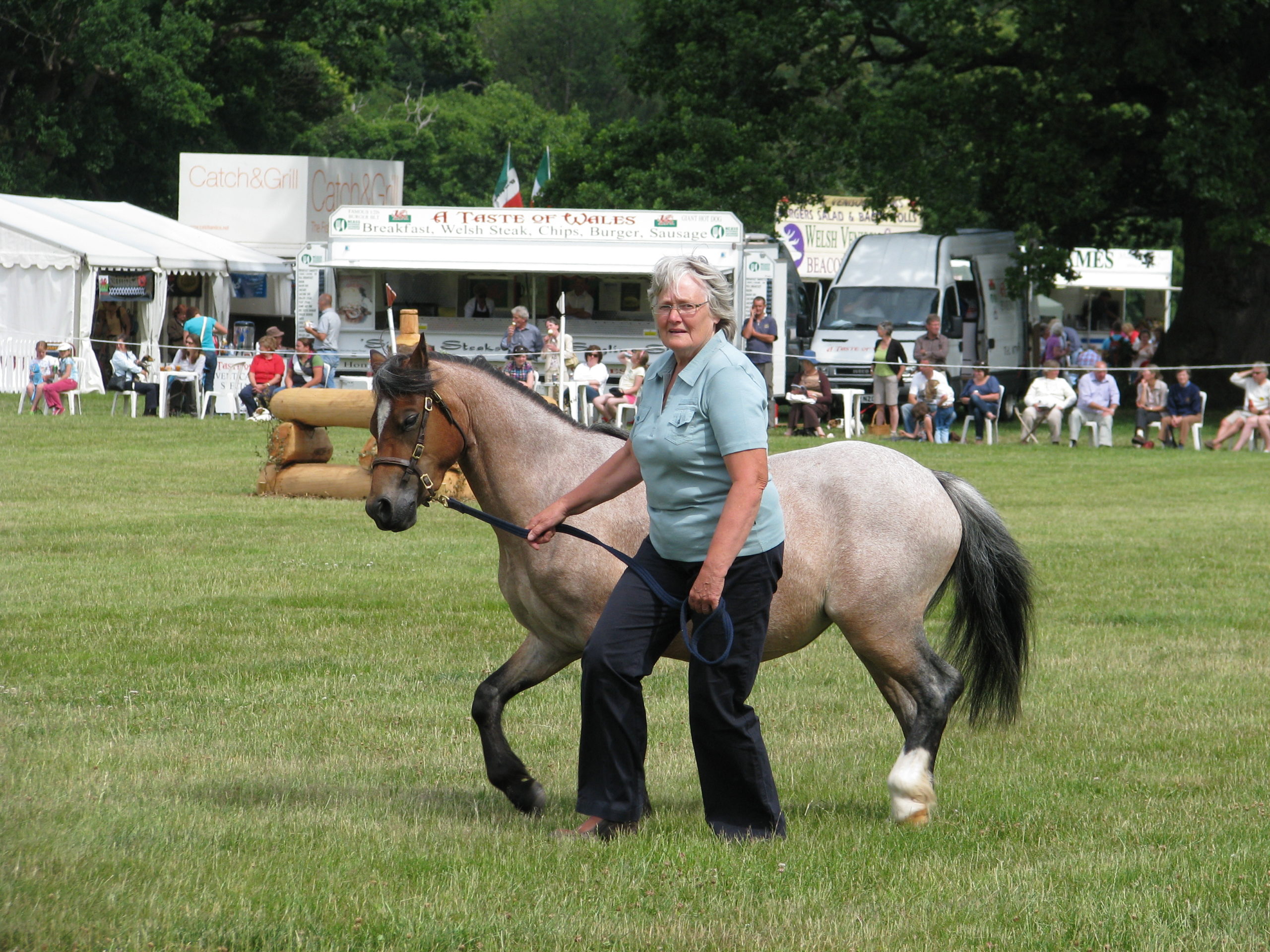
Sarah Osbourne (Nee Richards) present owner of the Criban stud.
MILLS
Up until the early 1900’s much of the grain for flour and stock feed was grown locally which necessitated the provision of mills. Gilestone latterly called Talybont Mill which remains in remarkable condition today. was driven by a leat from the Caerfanell river that passes under the canal. Other mills were Maesmawr which is now a dwelling on Station Road and Coity on the Cui brook, the remains of which can still be seen. Aberclydach was an unsuccessful venture that relied on a large pond filled from a line of springs to the west of the Clydach stream. Felin Newydd (New Mill) replaced this and was built along side the Caerfanell river adjacent to the eventual site of the Talybont reservoir dam. Pencelli mill buildings still exist and serve as an important bat roost. Operating a mill was skilled, heavy and dangerous
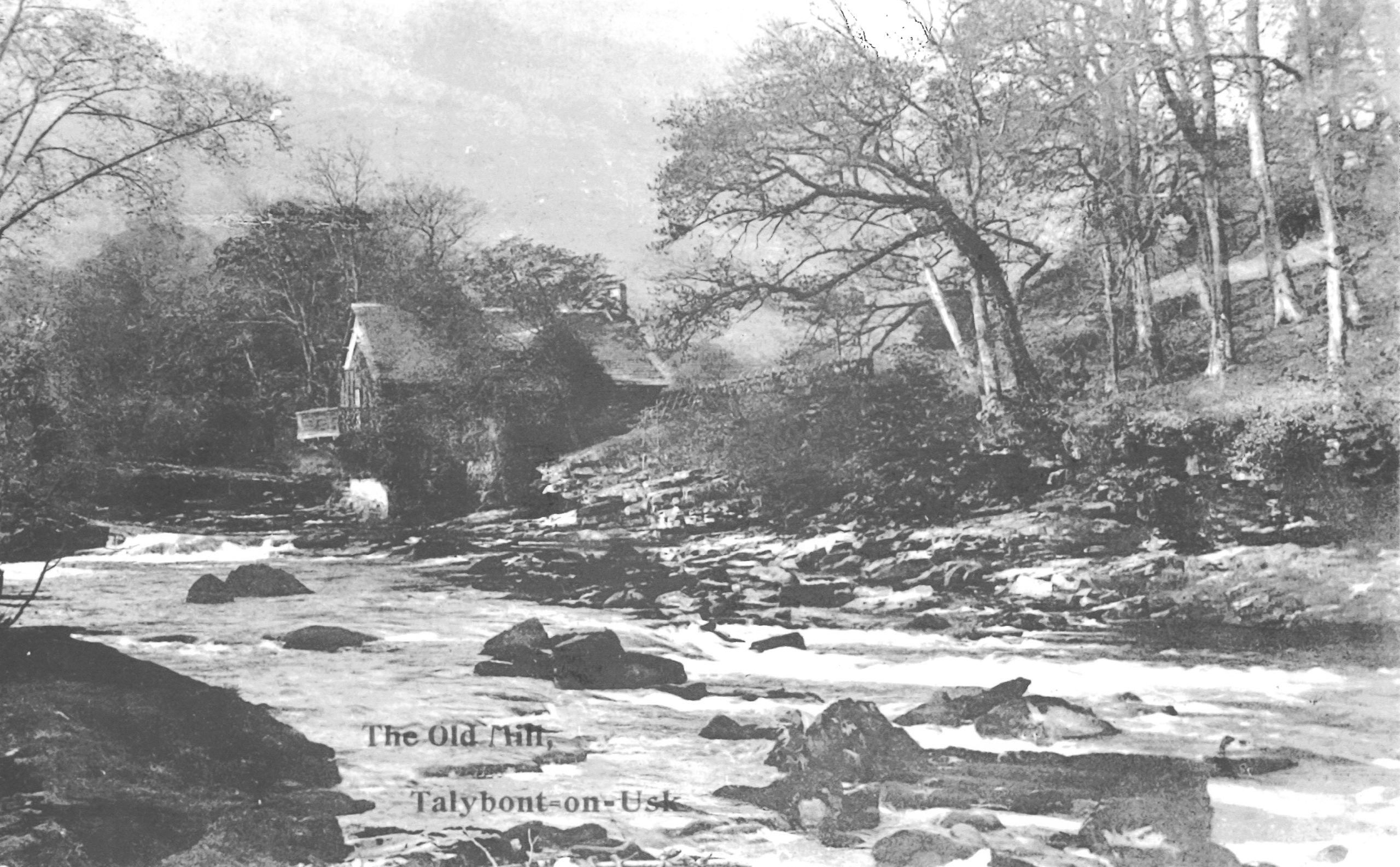
Felin Newydd Mill Aber 1929
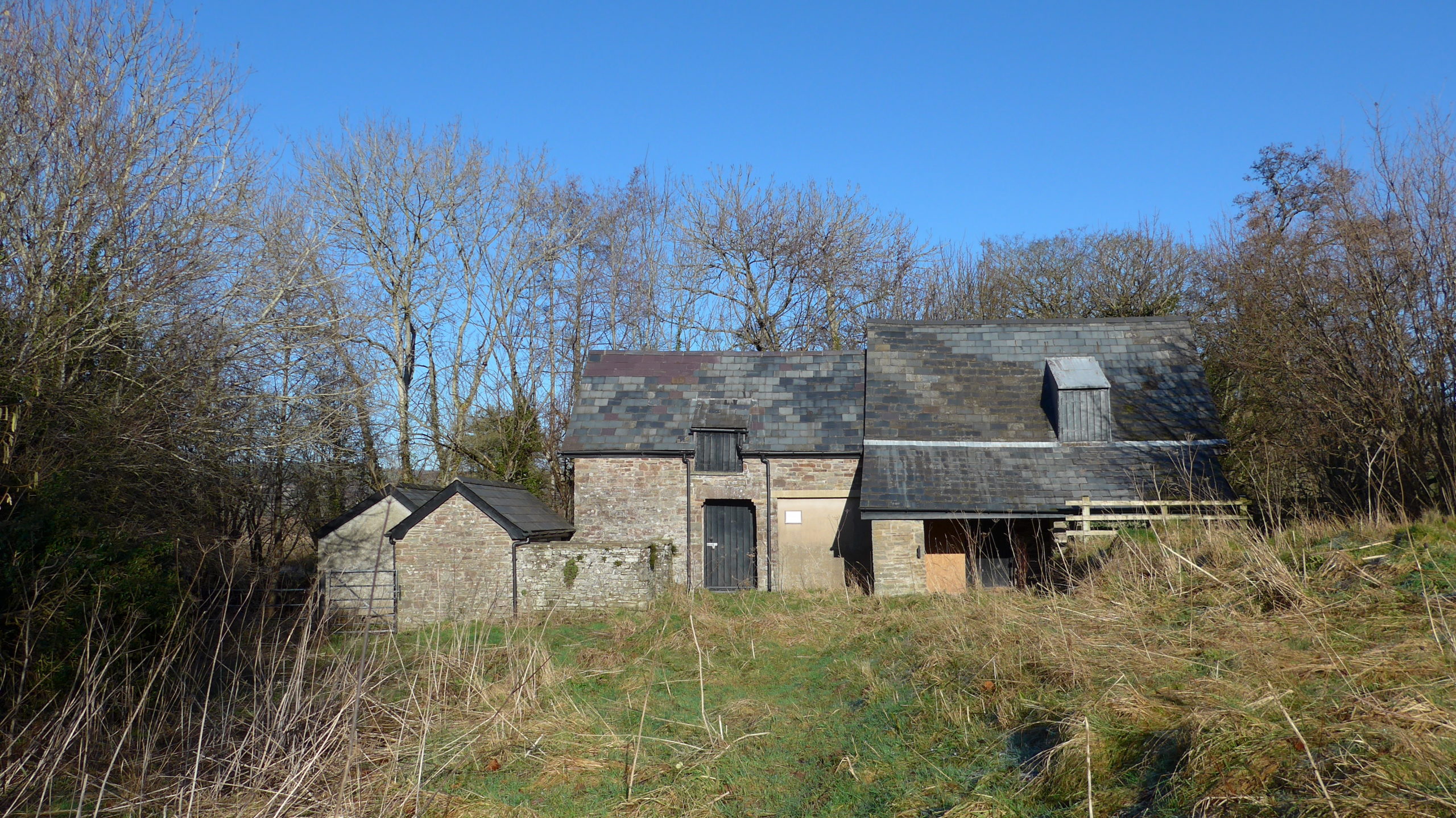
Pencelli Mill 2019
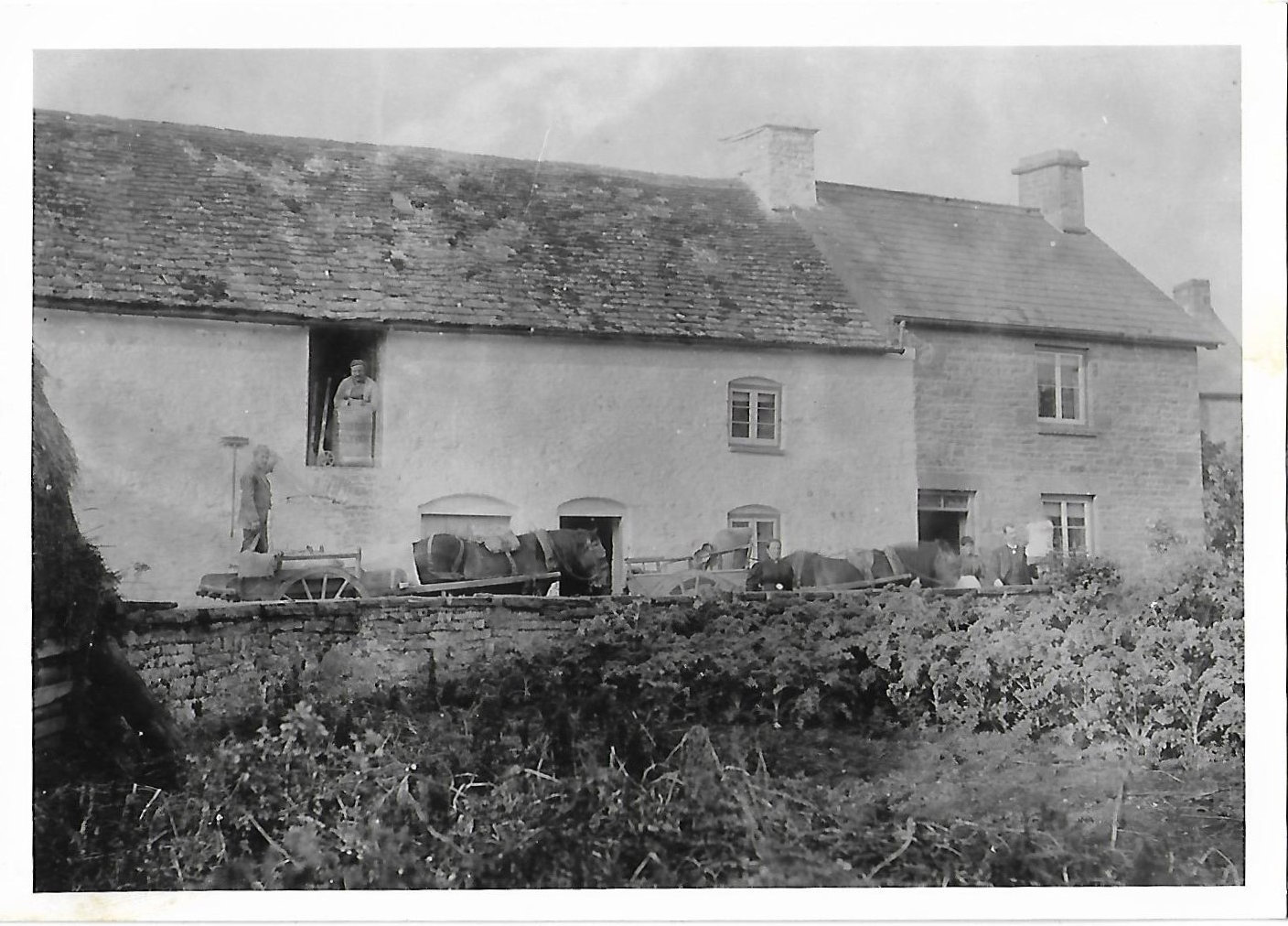
Talybont Mill mid 1930’s
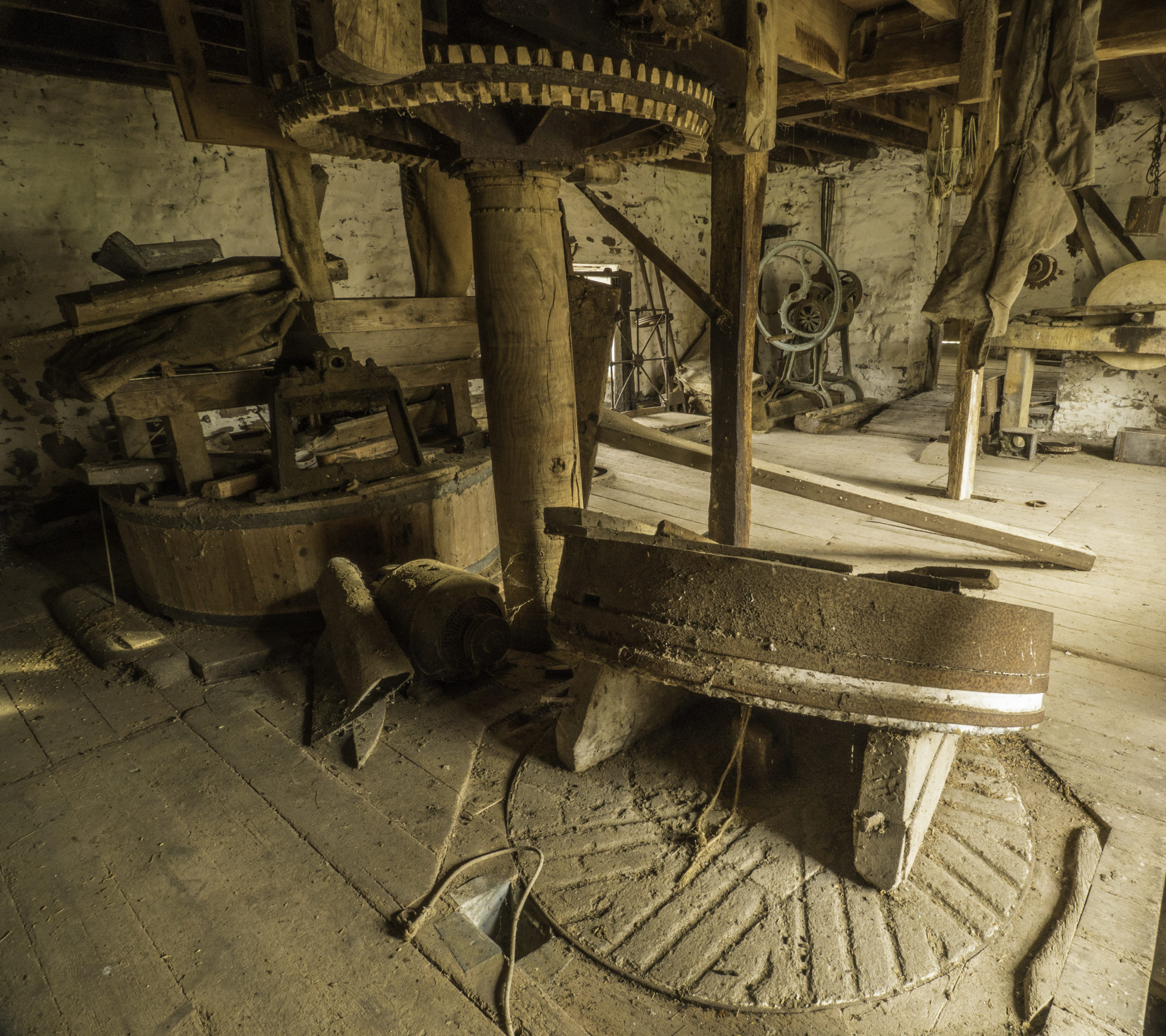
Talybont Mill First floor general view 2018
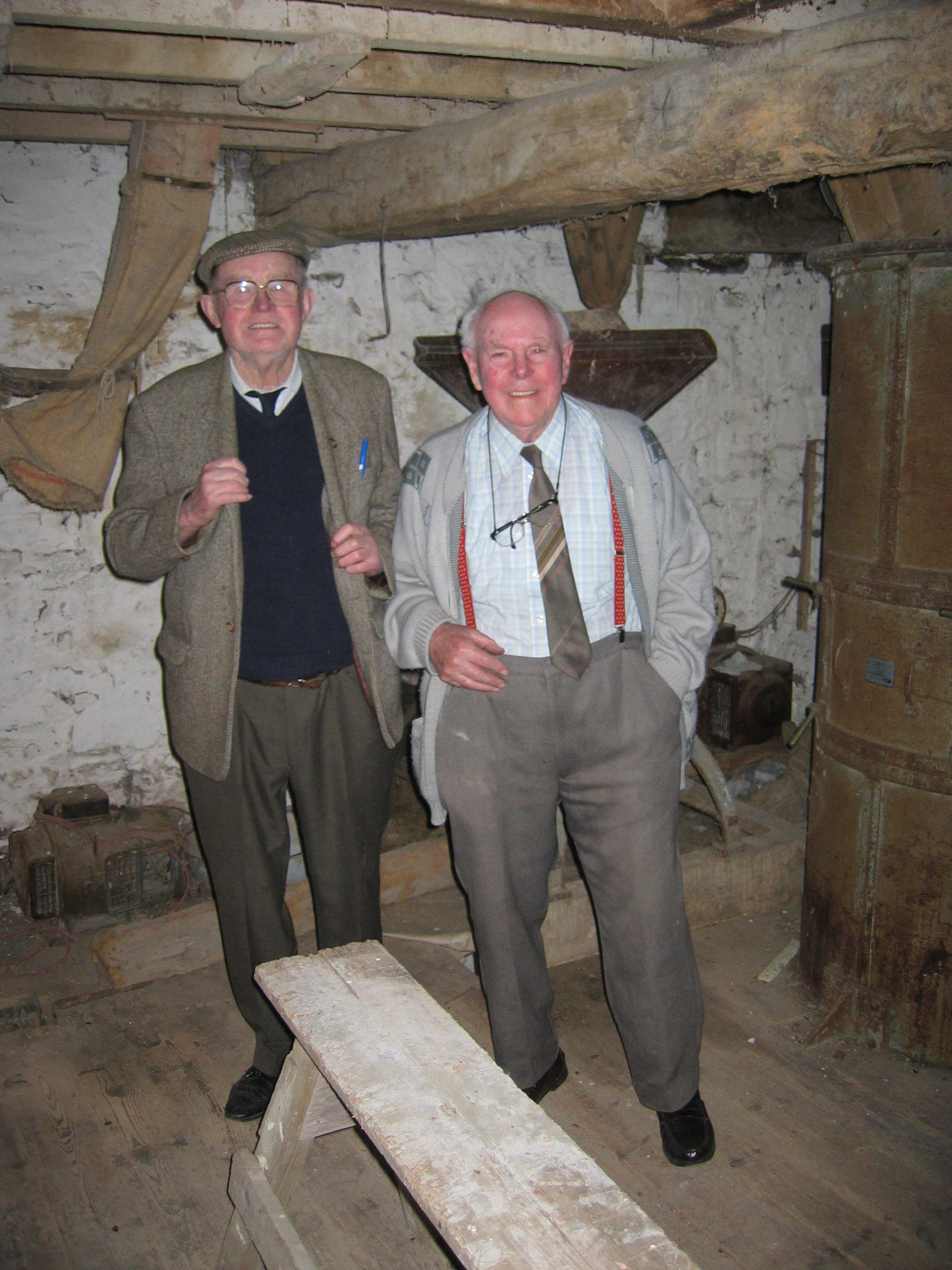
Alex Gibson (left) last miller with Aubrey Price whose first job was at at Talybont mill. 2004
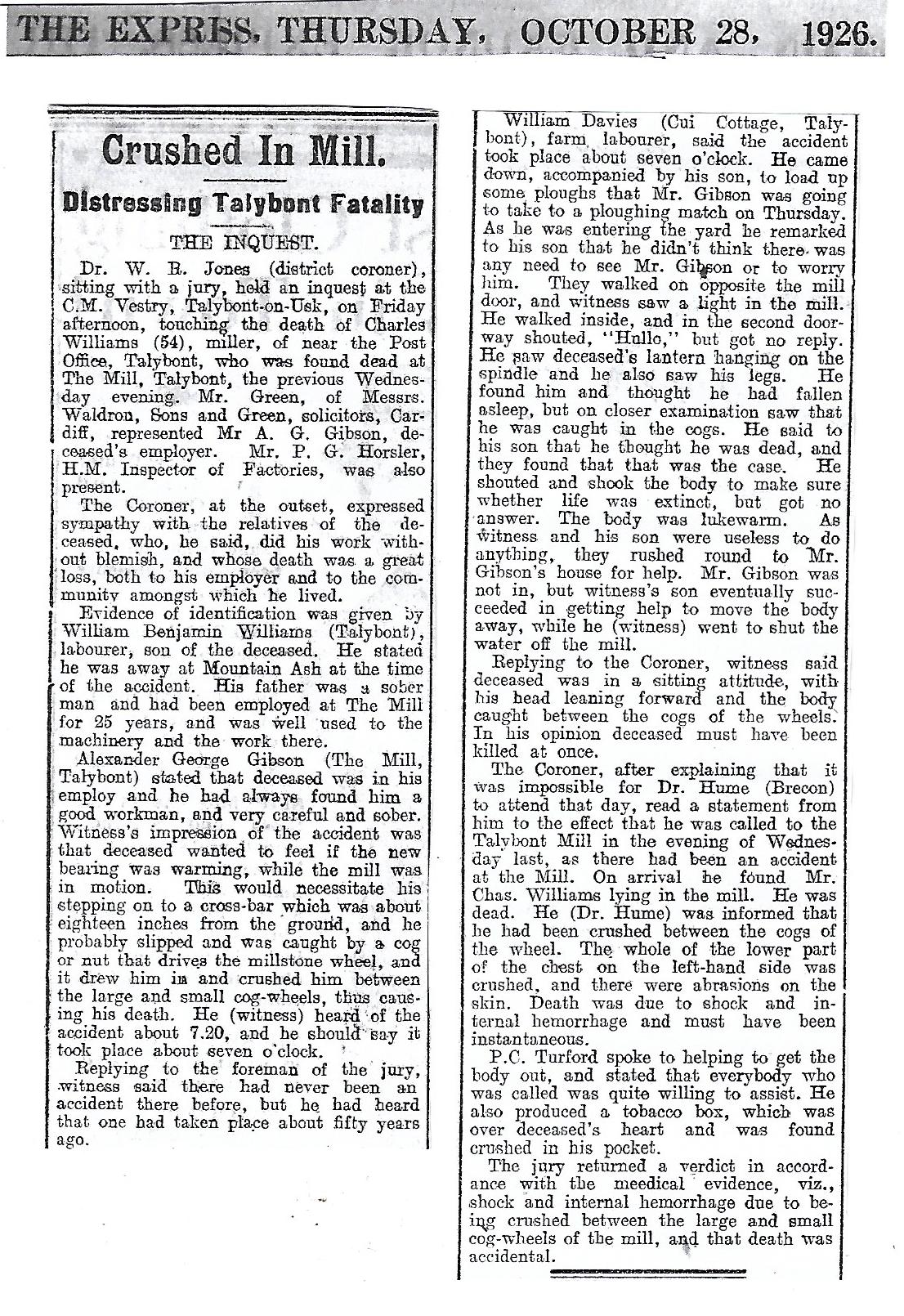
Talybont Mill Fatality Inquest
FORESTRY
The location of the coniferous plantations is in swathes above enclosed fields but below the open moorland which could not be bought or leased due to being commonly grazed land. A very clear example of this is on both sides of the Caerfanell river from the Talybont reservoir dam to the head of the valley where the upper boundaries of the conifers have created hard lines within the landscape. In this case the afforestation started in the late 1940’s on land acquired by Newport Corporation in 1932 and leased to the then Forestry Commission for 999 years. Elsewhere with in our community land was bought from private landowners. During the 1800’s much deciduous woodland was felled for industry and charcoal followed by the demands of World War 1. The government set up extensive programmes to replace former forests with fast growing conifers which followed on after World War II. Species most commonly grown are European Larch, Sitka Spruce, Douglas Fir, Norway Spruce and Scots Pine. Much of the felling and extraction is highly mechanised with heavily laden lorries being a very common sight on narrow country roads. A more sympathetic approach for replanting is occurring on many locations with an increase in native broadleaved species being grown and softer boundaries to the plantations.
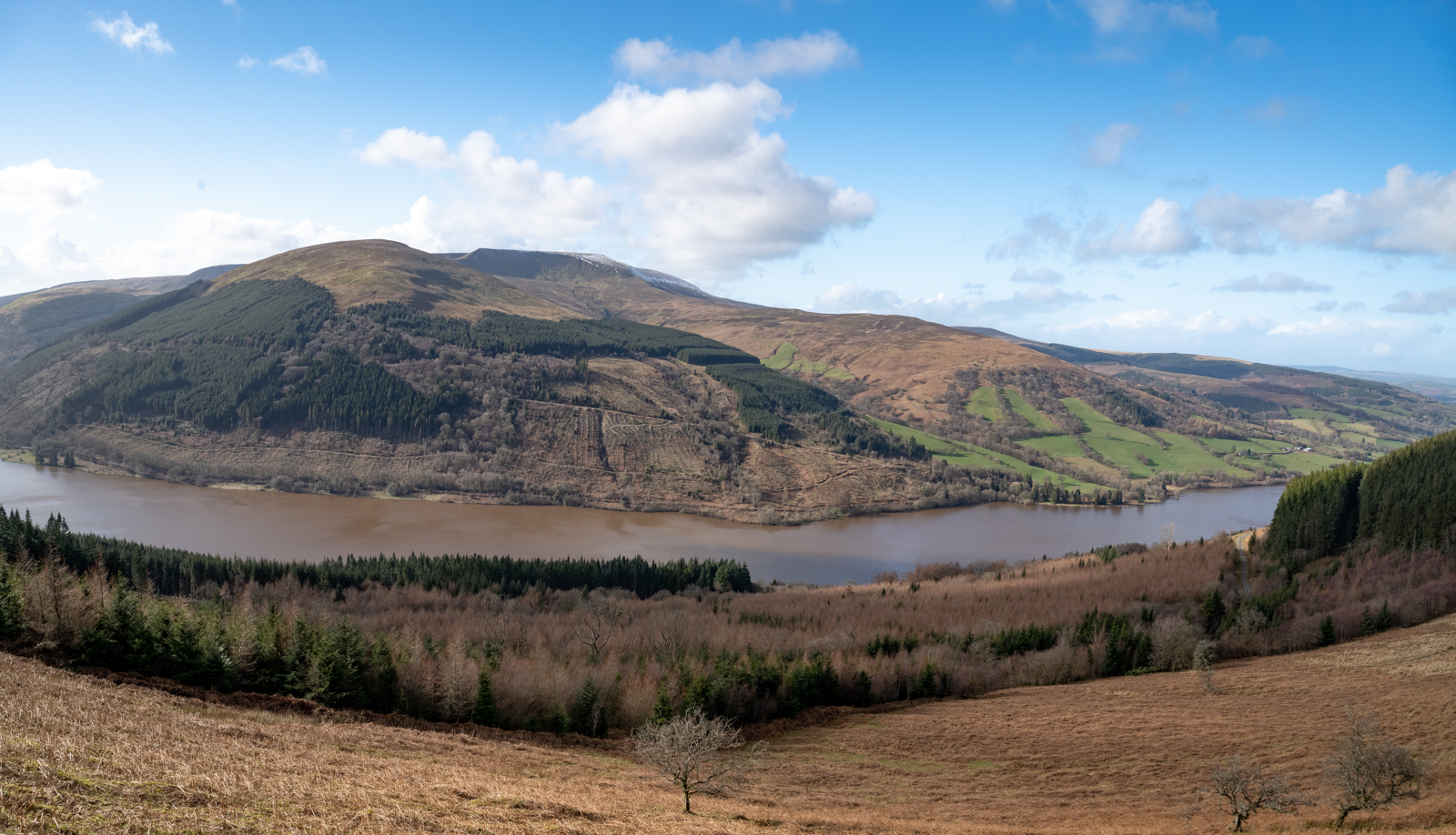
Forestry plantations around the reservoir 2020